
- Cruise Knowledge

Can a Cruise Ship Tip Over? Exploring the Truths

Doug Parker
- September 12, 2023
Here’s an age-old question we receive from readers – can a cruise ship tip over? While technically possible, it is not as probable as you’d think.
The cruise industry hosts over 20 million passengers annually on hundreds of cruise ships. However, some non-cruisers seem fixated on the unlikely possibility of a cruise ship capsizing.
Despite their ever-increasing size, the design of today’s cruise ships, and advanced technology, there’s no need to spend your cruise worrying about your ship tipping over.
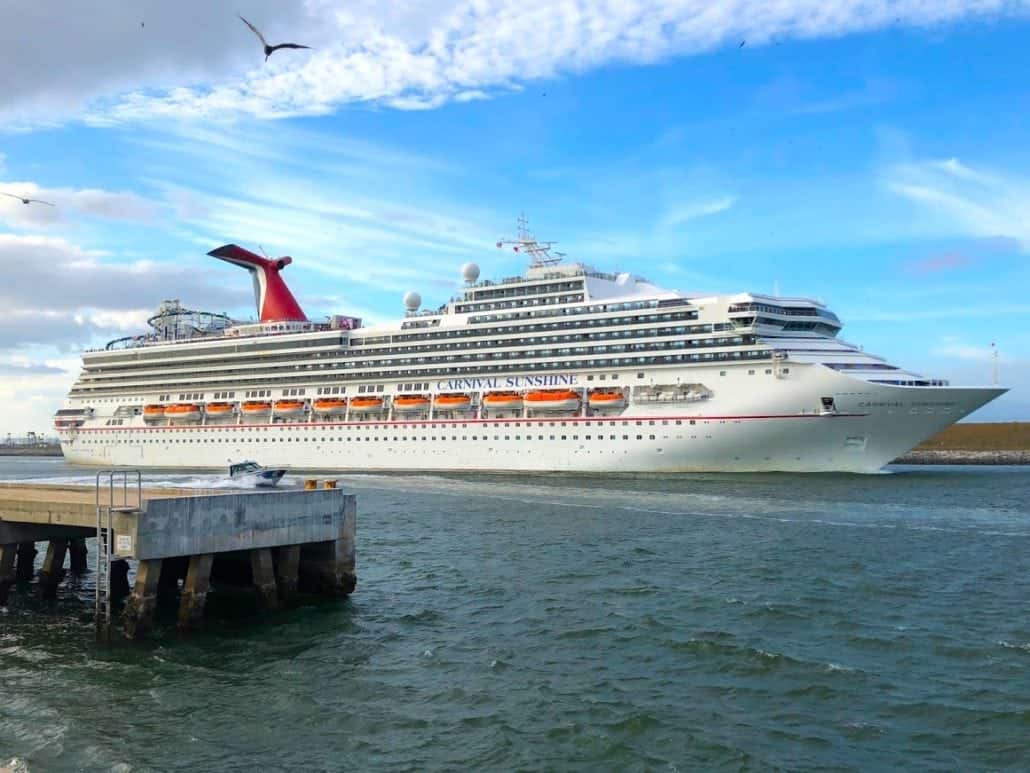
Understanding the design of a cruise ship will help calm any nerves you may have as a cruiser. The cruise industry is a business, including providing a safe and smooth journey.
That said, cruise ships are built to withstand rough seas and large waves, and they have a balance between buoyancy and weight.
The top part of the ship floats and maintains buoyancy, with the bottom part weighing it down. This balance is managed in the middle part of the ship to maintain its centering.
Understanding Cruise Ship Desig n

Ships are not only larger than ever but also incredibly safe. Have you ever wondered how one of the world’s largest cruise ships, the 236,800-ton Wonder of the Seas , doesn’t tip over?
In this case, Royal Caribbean, like other cruise lines, hires teams of naval engineers and architects who run hundreds of buoyancy tests to ensure crew and guest safety.
And with today’s computer modeling, cruise ship safety is light years ahead of just a few decades ago.
During sea trials – which occur well before a ship carries its first passenger – the vessels are put through almost every conceivable scenario concerning stability.
In 2009, the navigational team on Carnival Dream heeled (laid the ship over) the ship 45 degrees. Royal Caribbean did the same thing with Oasis of the Seas. It heeled 30 degrees intentionally during trials.
Marine tests show cruise ships can roll to nearly 60 degrees before they likely hit a point where they won’t return upright. However, you would not want to be on a ship with more than 15 degrees.
Stability Features
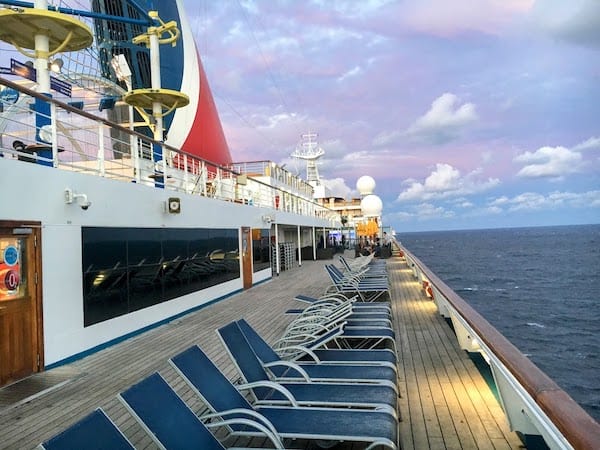
One of the most important features is the ship’s center of gravity. The center of gravity is where the ship’s weight is evenly distributed.
The ship’s center of gravity must be carefully calculated and positioned to ensure that the ship remains stable in all conditions.
Another important stability feature is the ship’s ballast, which is composed of a heavy material, such as water or sand, used to help stabilize the ship.
Ballast is located at the bottom of the ship and can be transferred from side to side to help maintain the ship’s balance. Cruise lines can use seawater or fuel for stability during sailing.
When calculating a ship’s center of gravity, the weight of fuel and water, which is several tons, is also taken into consideration for ballast.

Cruise ships also have stabilizing fins extending from the ship’s side, which help reduce the ship’s rolling motion, especially in rough seas, creating a more enjoyable experience for guests.
Stabilizers can be retractable and adjusted based on the ship’s speed and sea conditions.
However, there comes a point when even the stabilizers can’t maintain smooth sailing.
Weight Distribution
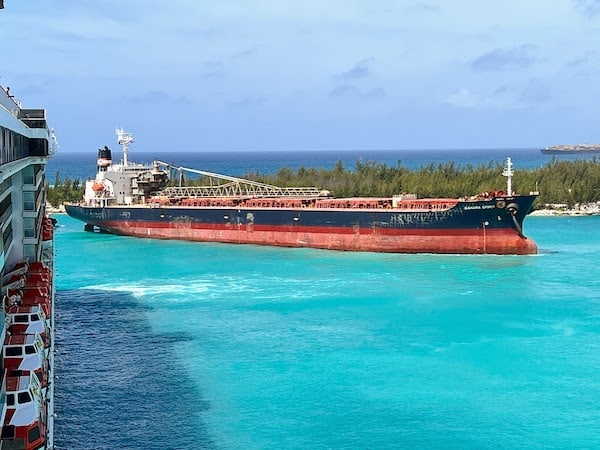
Weight distribution on a cruise ship is critical to maintaining stability as it must be evenly distributed from side to side and front to back.
Imagine if, at any moment, all of the ship’s bars, lounges, and other facilities were on one side of the ship; this would cause a weight imbalance.
Cruise ship stability is achieved by evenly distributing public spaces and machinery, such as engines, fuel tanks, fresh and wastewater, and cargo throughout the ship.
Cruise ships are designed with multiple decks and heavier components on the lower decks.
This helps to lower the ship’s center of gravity, making it more stable. The ship’s fuel tanks are also located at the bottom, which helps keep the ship’s weight low.
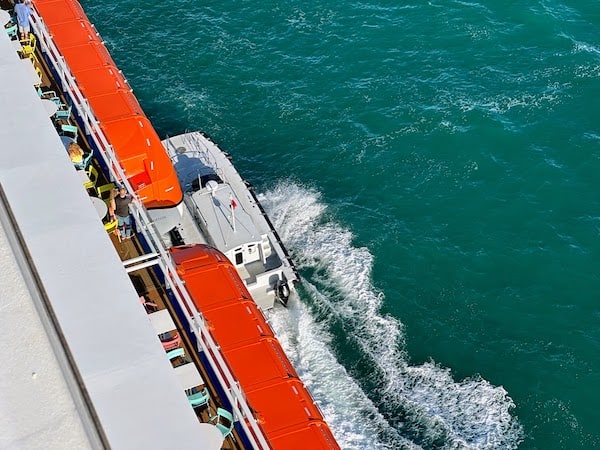
In addition to careful weight distribution, many cruise ships have double-hull construction that provides additional protection if the hull becomes compromised.
If the outside hull is damaged, the secondary hull maintains a watertight seal to keep the boat upright and reduce flooding.
A feature that your average cruiser might not know about, but it can be comforting to someone who may be afraid to try out a cruise for the first time.
If you’re interested in the details, a study conducted at the Fisheries and Marine Institute of Memorial University of Newfoundland outlines the history and calculations involved in determining buoyancy .
Factors That Could Cause a Cruise Ship to Tip Over
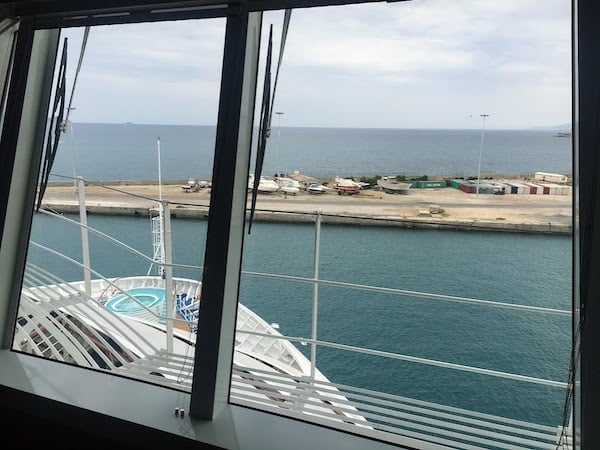
Ultimately it would take an extreme act or carelessness to flip a ship over. In the cruise line’s best interest, its ships are designed to be stable and safe.
However, in the rare case that a cruise ship might tip over, here are a few possibilities for why that may occur.
Human Error
This was best documented in 2006 when Crown Princess left Port Canaveral and unexpectedly listed up to 45 degrees.
An investigation by the National Transportation Safety Board (NTSB) eventually concluded that the likely cause of the Crown Princess accident was the second officer’s erroneous steering wheel commands.
These were initially made to correct an unexpectedly high turn rate and address the ship’s tilting.
Contributing factors included the captain and staff captain’s improper inputs into the integrated navigation system, while in high-speed, shallow waters, they failed to stabilize the ship.
As a cruise ship moves through shallow water, it creates a low-pressure area underneath its hull. This low-pressure area can cause the ship to sink slightly, increasing its draft and making it more difficult to control.
Severe Weather Conditions

Inclement weather can significantly affect a ship’s stability, as high winds, large waves, and heavy rain can all contribute to a vessel’s pitching and rolling.
When a ship encounters severe weather conditions, the crew will typically take steps to minimize the ship’s exposure to the weather, including changing course, slowing down, or even stopping the ship altogether.
The cruise ship’s captain, navigation team, and engine team are highly trained, and safety is always their priority.
Mechanical Failure
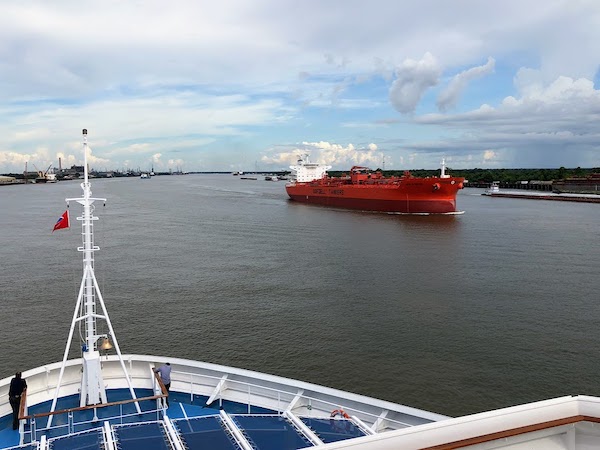
Mechanical failure is another factor that could cause a cruise ship to tip over. There are many mechanical systems on a cruise ship; if any of these systems fail, it could compromise its stability.
For example, if a ship’s ballast tanks fail to operate correctly, the ship could become unbalanced and tip over. Similarly, if a ship’s propulsion system fails, the vessel could be pushed off course and into dangerous waters. Again, this is extremely rare.
RELATED: Are Cruise Ships Safe?
Cruise ships undergo rigorous inspections and maintenance procedures to prevent mechanical failure,
In the event of a mechanical failure, crew members have a plan in place, and many times, as a cruiser, you may never know there was a problem.
Most cruises sail without incident, but know there’s always a backup plan.
Can a cruise ship tip over? The safety measures in place

Cruise ships are designed with safety in mind, and many measures are in place to prevent tipping. Here are just a few of the safety measures that are used:
Advanced Warning Systems
Modern cruise ships are equipped with advanced warning systems that can detect changes in the ship’s stability. These systems use sensors to monitor the ship’s movement and can detect if the ship is starting to lift or tilt.
If the system detects any changes in the ship’s stability, an alarm will sound, and the crew will be alerted. This allows the crew to take action quickly, right the ship, and prevent further tipping.
Cruise Ships That Have Tipped Over
Over the years, a few cruise ships have tipped over. But remember, thousands of cruise ships continue to sail daily without incident successfully. Here are some notable examples:
1. MS Estonia

The MS Estonia was a passenger and car ferry that capsized and sank in the Baltic Sea on September 28, 1994. The ship was on its way from Tallinn, Estonia, to Stockholm, Sweden, when it encountered rough seas and high winds.
The ship’s forward ramp went into the water, allowing water to flood the car deck and causing the vessel to capsize. Of the 989 passengers on board, only 137 survived.
2. Costa Concordia

The Costa Concordia was a cruise ship that sailed for Costa Cruises. It ran aground and capsized off the coast of Italy on January 13, 2012.
The ship hit a rock due to the negligence of the captain and took on water, causing it to fall to one side and eventually capsize. Of the 4,252 passengers and crew on board, 32 died.
Following the incident, the cruise industry undertook an extensive review and, as a result, implemented an array of changes to improve safety. Eventually, this led to the development of the Cruise Passenger Bill of Rights.
Other Notable Accidents
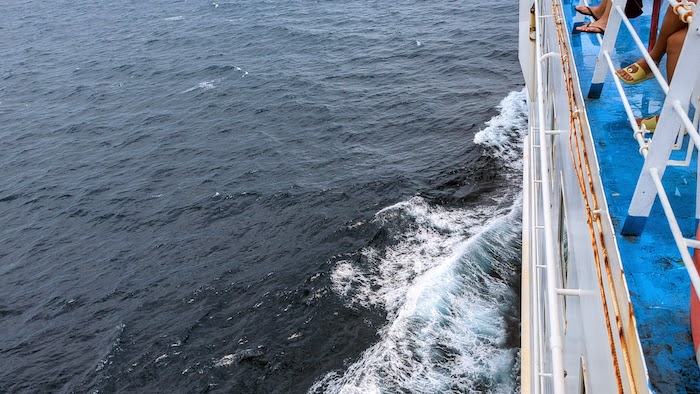
Another accident included the MS Achille Lauro cruise ship, which caught fire and sank in the Indian Ocean on November 30, 1994. The vessel had a history of mechanical problems and had experienced several previous fires.
The MV Explorer was a cruise ship that sank in the Antarctic Ocean on November 23, 2007. The ship hit an iceberg and began taking on water, causing it to fall to one side and eventually sink. All 154 passengers and crew were rescued by nearby ships.
The mentioned incidents have emphasized the significance of implementing safety regulations and procedures in the cruise industry.
Final Thoughts
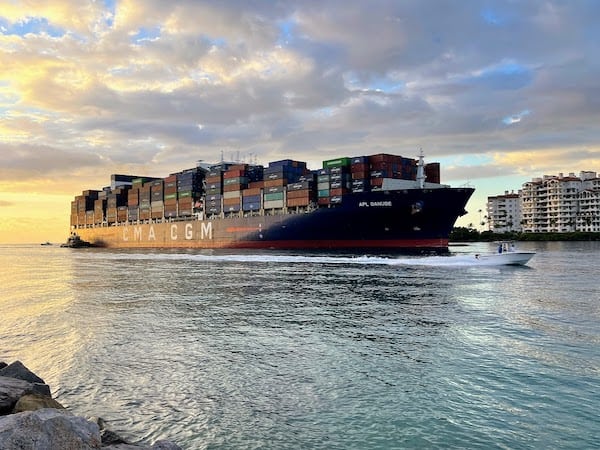
A cruise ship list is a highly unlikely event and happens very rarely. Today’s massive cruise ships are more equipped to withstand rough seas and high waves and have extensive safety measures and emergency systems to alert staff of potential issues.
Crew members also train regularly on what to do in emergencies, including a ship listing.
Although cruise ships are designed to endure harsh weather conditions and maintain stability, accidents can still occur.
Cruise lines prioritize safety by taking all necessary precautions to prevent accidents and guarantee the safety of their passengers and crew.
An unsafe cruise ship would significantly harm the cruise industry’s business, so they prioritize ensuring a secure and safe operation.
RELATED: Why Are Cruises to Nowhere Illegal in the United States?
Frequently Asked Questions
Can a cruise ship survive a rogue wave.
Modern-day cruise ships are designed to withstand rough weather conditions, including rogue waves, which happen from time to time. Cruise ships are built with stabilizing systems that help to keep them upright during storms.
Has a cruise ship ever tipped over?
Cruise ships can and have tipped over, but it is extremely rare. One of the most notable incidents was the capsizing of the Costa Concordia in 2012, which resulted in the deaths of 32 people. The accident was attributed to human error and resulted in many changes within the industry, particularly in bridge management.
How many cruise ships have tipped over?
While there have been instances where a cruise ship has tipped over, these incidents are extremely rare. According to the Cruise Lines International Association , there have been only a handful of incidents where a cruise ship has capsized in the past 20 years. During this time, the cruise industry has carried tens of millions of passengers safely.
How does a cruise ship not tip over?
Cruise ships have several features that help keep them upright during storms, including stabilizing systems, ballast tanks, and a low center of gravity. Marine engineers run extensive modeling to test a ship’s stability in all conditions.
How does a cruise ship float?
Cruise ships are designed to balance buoyancy and weight to maintain stability. The topmost part of the ship retains its buoyancy while the bottommost piece weighs it down. This balance is managed in the middle part of the ship to keep it centered.
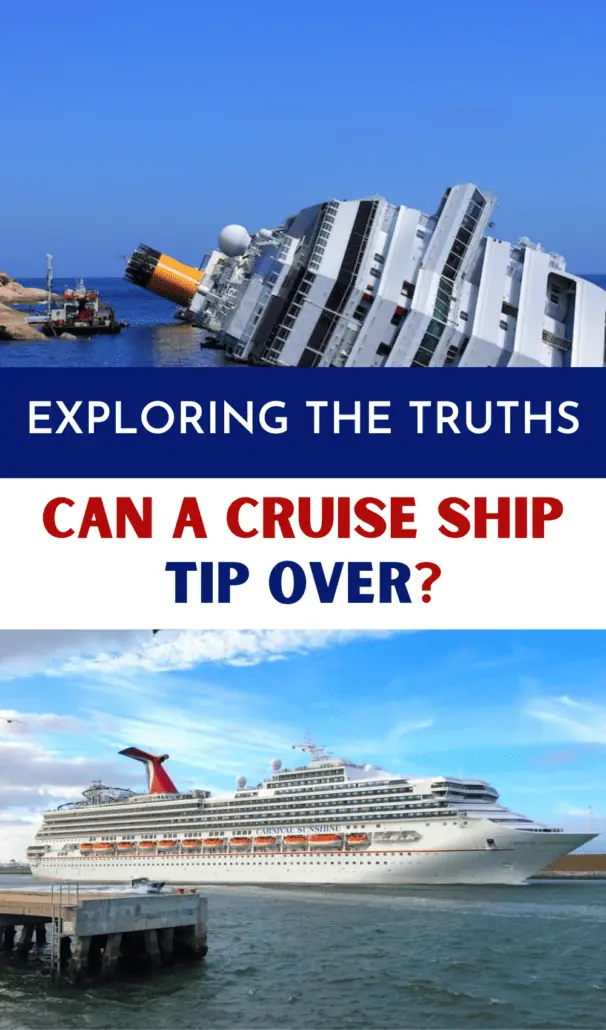
Recent Posts
Princess cruises offers price matching on lowest published fares, carnival’s latest updates on loyalty benefits, baggage rules, and onboard comfort, liberty of the seas review + cruise news [podcast], sunk california cruise ship refloated after leaking 14,900 gallons of waste, share this post, related posts.

Carnival Reports $92 Million Profit and Record Cruise Bookings

Disney Details Massive New Cruise Ship for Singapore

Bringing you 15 years of cruise industry experience. Cruise Radio prioritizes well-balanced cruise news coverage and accurate reporting, paired with ship reviews and tips.
Quick links
Cruise Radio, LLC © Copyright 2009-2024 | Website Designed By Insider Perks, Inc

Can A Cruise Ship Tip Over? Chances And Protocols
The chance of a cruise ship getting tipped over is very low.
Modern cruise ships can withstand waves up to 50 feet.
And for rogue waves above 50 feet, which are very rare, the cruise ship may suffer some damage.
Cruise ships going to the Arctic and Antarctic voyages have strong hulls too.
Additionally, cruise ships have excellent weather prediction technology onboard.
Table of Contents
Safety Measures and Protocols to Prevent Cruise Ships from Tipping Over
Here are the safety measures, and protocols of a cruise line:
- The cruise ship will start an immediate evacuation procedure if there is a risk of capsizing.
- The ship’s captain will signal an alert by giving seven short horn blasts followed by one long horn blast.
- Messages will be sent to nearby ships and the shore.
- Passengers will be directed to assemble on the deck of lifeboats. A systematic and orderly evacuation process will start.
What are the chances of a cruise ship sinking?
For a cruise ship to sink, many factors should come into play at the same time such as:
- The cruise ship should collide with a rogue wave, coral reef, ice, etc.
- The captain of the ship will not steer the ship well.
- The hull should get cracked.
- Water should get into the ship through the cracks and holes of the hull.
All these factors occurring at the same time are rare, although not impossible.
Even then, the cruise ship will stay afloat.
Because they are designed to encounter such occurrences.
Cruise ships can also withstand damage from hitting an iceberg.
What should you do if your cruise ship capsizes?
In the unfortunate event of your cruise ship getting capsized, here is what you should do:
- First, put on your life jacket.
- Get to the deck where you can get on to the lifeboats.
- Avoid the elevators as they may not work.
- If the boat begins to tilt, hold on to the walls or handrails, if any.
It is important to stay calm in such a situation because panic will not help you to overcome the situation.
Remember that the crew undergoes rigorous training for such emergencies.
So, let them handle the situation to evacuate all the passengers.
And there are enough lifeboats on every cruise ship to evacuate all the passengers.
You May Also Like:
- Can You Survive Falling Off A Cruise Ship: Six Quick Actions
- How To Plan A Cruise: Your Ultimate Guide
Leave a Comment Cancel reply
Capsizing: Essential Tips for Prevention and Survival
Capsizing is a phenomenon that occurs when a boat or ship rolls on its side or turns upside down due to various factors, such as wave action, instability, or wind force. This can lead to devastating consequences for the vessel, its crew, and any passengers on board. Capsizing has been a critical focus throughout maritime history for engineers, sailors, and emergency responders alike in an effort to understand the causes, develop safety measures, and minimize the risks associated with this potentially fatal event.

Understanding the factors that contribute to capsizing is essential in order to take preventative measures and promote safety at sea. The stability of a vessel is a crucial element in determining its susceptibility to capsizing, and the type of vessel can play a significant role in how it reacts to external forces
. Additional factors such as weather conditions, the skill of the crew, and how a vessel is loaded also contribute to the likelihood of capsizing. By examining past incidents and learning from them, it is possible to develop strategies to mitigate the risks involved with capsizing and help prevent future occurrences.
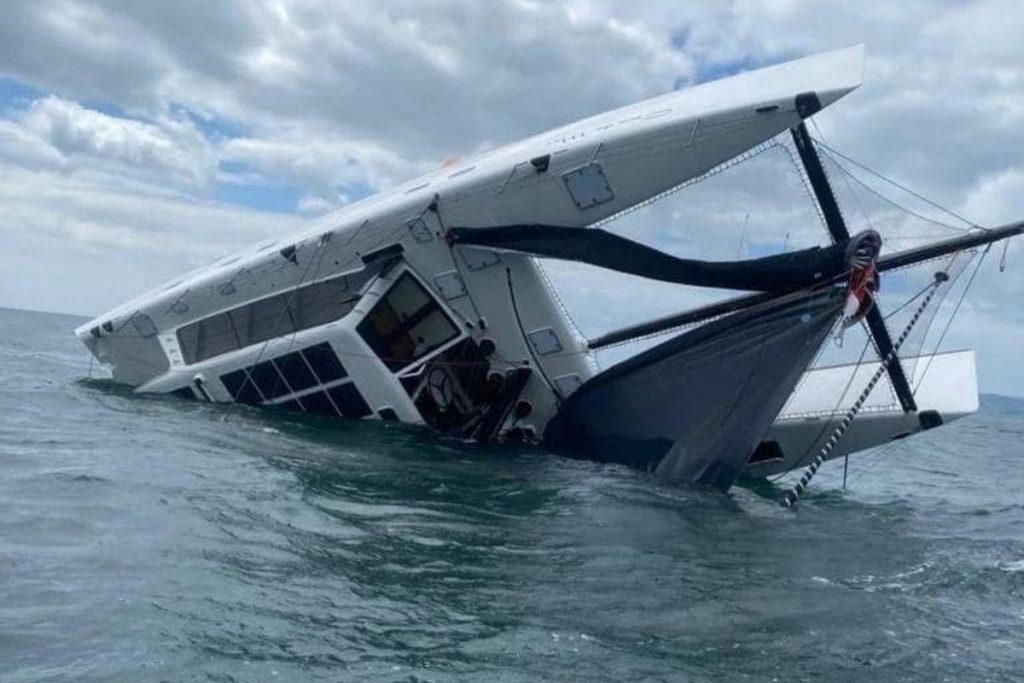
Key Takeaways
- Capsizing involves a boat or ship rolling on its side or turning upside down, often with severe consequences
- Stability, vessel type, and external factors such as weather conditions can influence the likelihood of capsizing
- Examining past incidents allows for the development of preventative measures and improved safety at sea.
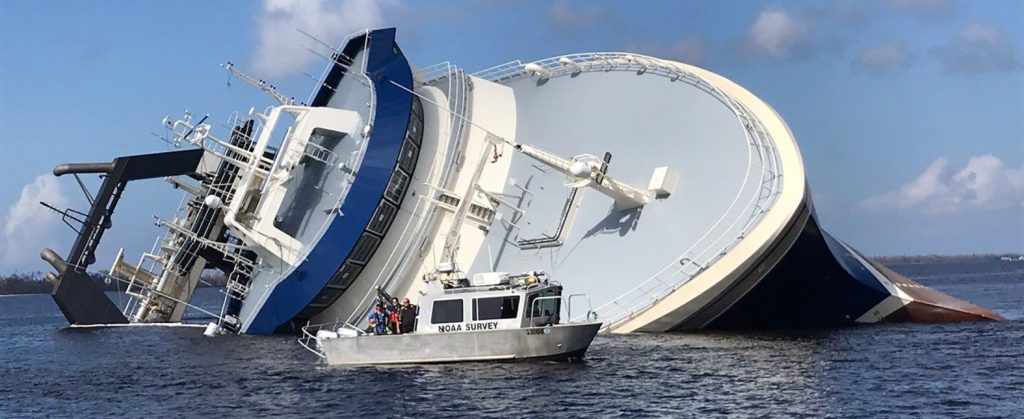
Understanding Capsizing
Capsizing refers to the process of a vessel, such as a boat or ship, overturning and ending up upside down in the water. This sudden and often violent event can occur due to a variety of reasons, including rough weather, improper loading, or operator error. When a vessel capsizes, it can pose a significant danger to sailors, crew members, and passengers on board.
There are different factors that might contribute to capsizing. One common cause is improper weight distribution . When there is an uneven distribution of weight, the stability of the vessel can be compromised, leading it to capsize . It's essential that load is evenly distributed during the process of loading the vessel to ensure its stability while on water.
The crew's movement on the boat can also impact stability; hence, it's crucial to maintain proper weight distribution throughout the journey.
Capsizing can also be a result of environmental conditions such as waves, wind, and water currents. Severe weather conditions, including heavy storms and high winds, create rough seas, which can make it difficult for a vessel to maintain stability. For example, large waves or strong winds can push a boat or ship beyond its angle of positive static stability , causing it to overturn in the water.
Another potential factor in capsizing is operator error . Inexperienced or careless boat handling can lead to situations where a vessel may overturn due to abrupt directional changes, navigating in rough waters, or failing to account for the vessel's limitations.
To mitigate the risk of capsizing, it's essential to understand and respect the vessel's limits and capabilities. Proper maintenance and operation, understanding weather conditions, and regular evaluation of the vessel's stability through factors such as loading and weight distribution can help to ensure a safe and enjoyable time on the water.
In the event of a capsize, the priority is to ensure the safety of all passengers and crew and to attempt to right the vessel . Precautionary measures, including life jackets and emergency plans, should be in place to deal with such situations effectively.

The Science of Stability
Vessel stability is a critical factor in ensuring the safety of ships and their crew. It refers to a vessel's ability to maintain balance and maintain its upright position despite the forces acting upon it, such as waves and wind.
A basic principle governing a vessel's stability is the relationship between its center of gravity (G) and the metacentric height (GM). The metacentric height is the distance between the center of gravity and the metacenter (M), a point where the line of action of the buoyant force intersects the vessel's centerline. A higher GM value indicates better stability, as the vessel is less likely to capsize.
External factors, such as waves, can significantly impact a ship's stability. In beam seas, for instance, waves striking the vessel's sides at a 90-degree angle can induce roll motion. This roll motion can lead to potential capsizing events if the oscillations become too large, surpassing the vessel's designed stability limits.
Wind forces are another aspect to consider when analyzing a ship's stability. The wind's effect on a vessel's sail area or superstructure can cause a heeling force, pushing the vessel to one side. This, in turn, could result in a loss of stability if the vessel's GM value is not sufficient to counteract these forces.
In summary, a vessel's stability is determined by a complex interplay between its center of gravity, metacentric height, and the forces acting upon it, such as waves and wind. Ensuring that a ship is designed to withstand these forces is critical to maintaining its safety at sea.
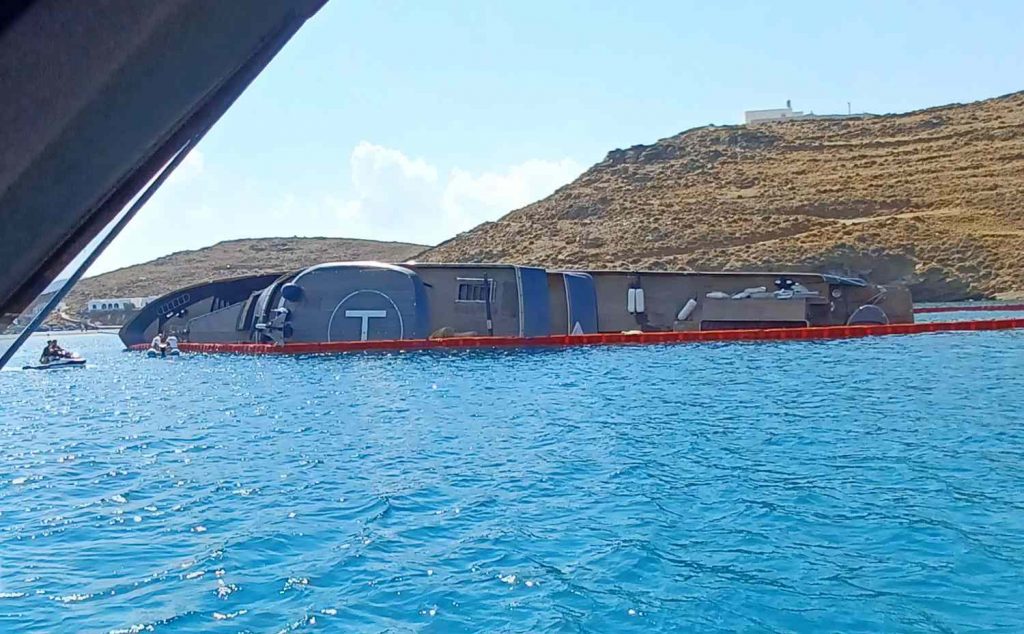
Factors Leading to Capsizing
Capsizing is a dangerous event that can affect various types of boats, leading to loss of life and property. Several factors contribute to capsizing, and it is crucial to understand and minimize these risks for a safe boating experience.
One leading factor in capsizing is the speed of the vessel. High-speed boats can capsize when turning too fast, causing the boat to lose balance and tip over.
Excessive speed may also result in loss of stability, particularly in smaller boats, due to the motion of the water. It is essential to maintain appropriate speeds and remain vigilant in observing speed limits and water conditions.
Load distribution plays a significant role in maintaining a boat's stability. An unbalanced weight distribution can cause a ship to become unstable and overturn. Overloading is another significant concern, as it adds unnecessary weight to the vessel, lowering its center of gravity and increasing the risk of capsizing. Proper weight distribution and adhering to loading guidelines are crucial for avoiding capsizing.
Weather conditions, such as storms, heavy rain, and strong winds, can greatly influence a boat's stability. In particular, smaller boats are more susceptible to capsizing due to weather elements.
Large waves and rough water surfaces can cause boats to become unstable and eventually capsize. It is vital to monitor the weather forecasts and avoid venturing into the water with unfavorable conditions.
Collisions are another potential cause of capsizing. A boat's stability may be compromised when it collides with another vessel, an underwater object, or even a large wave. In cases of collision, the impact force can cause the boat to lose its balance and capsize. It is crucial to maintain a safe distance from other watercraft and objects while navigating the waterways.
In conclusion, various factors, including speed, load distribution, overloading, weather conditions, and collisions, can lead to capsizing. By being aware of these risks and taking necessary precautions, boaters can enjoy a safe and enjoyable time on the water.
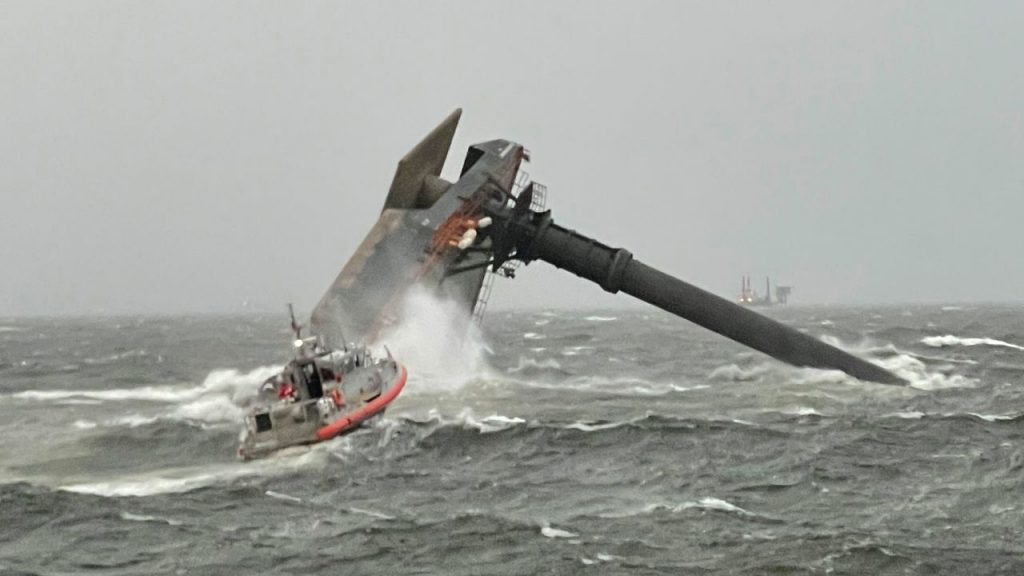
Types of Vessels and Their Susceptibility
Boats and ships differ in size and purpose, which affects their susceptibility to capsizing. Generally, smaller vessels like canoes , kayaks , small dinghies , and lifeboats are more prone to capsizing due to their lower stability and higher sensitivity to wind and waves. However, even larger vessels like ferries and sailboats can experience capsizing if certain conditions are met, such as imbalance of weight, equipment damage, or human error 1 .
Canoe and kayak capsizing is usually caused by paddler inexperience, strong currents, or unpredictable water conditions. Staying low in the vessel and maintaining good balance can significantly reduce the risk of capsizing in canoes and kayaks 2 .
Sailboats and ferries are exposed to higher wind forces due to their larger sail area or superstructure. These forces can create a significant heeling moment, which can lead to capsizing if not properly managed 3 . For sailboats, this can be mitigated by adjusting the sails or mast angle. Ferries, on the other hand, can benefit from modern stability systems and regular maintenance checks to minimize the risk of capsizing 4 .
Small dinghies and lifeboats have a higher risk of capsizing due to their smaller size, lighter construction, and vulnerability to waves or wakes from passing vessels. These small vessels should be operated with caution, especially in rough or crowded water conditions 5 .
Speedboats , which are designed for speed and agility, may also be susceptible to capsizing if not operated properly. Factors such as sharp turns, excessive speed, or sudden changes in direction can result in instability, potentially leading to a capsize 6 . Operators of speedboats should always prioritize safety and stay within the vessel's operating limits to prevent such incidents.
In conclusion, the susceptibility of different vessels to capsizing varies depending on their size, design, and operational conditions. By understanding these factors and operating all types of watercraft with care, the risk of capsizing can be effectively reduced.

Safety Measures and Survival
Capsizing of large vessels can lead to life-threatening situations, making it crucial to implement safety measures and adopt survival techniques. From the moment of capsizing, the priority is always the safety of the crew and passengers . The captain or a designated crew member should assess the situation and evaluate the risks, determining the best course of action based on the severity of the capsizing.
One critical aspect of safety is ensuring that all members on board are equipped with personal flotation devices (PFDs). PFDs help reduce the risk of drowning and make it easier for survivors to stay afloat while awaiting rescue.
In some cases, vessels may be designed to self-right, where the natural buoyancy and design of the boat enables it to return to its upright position following a capsize. However, many boats, particularly small recreational crafts, do not have this capability. Crew and passengers should be familiar with capsize recovery techniques such as those involving the use of paddles, ropes, and other flotation devices.
Lifeboats play a critical role in the survival of crew and passengers. Properly maintained and equipped lifeboats provide a safe and secure means of escape. Regular drills should be conducted to ensure familiarity with the process of launching and boarding lifeboats.
Communication channels also become crucial during such emergencies. A vessel or its survivors should establish contact with the Coast Guard or other rescue units through radio calls or other signaling devices, including flares and EPIRBs (Emergency Position-Indicating Radio Beacon).
In addition to implementing adequate safety measures, it is essential to stay informed about potential causes and warning signs of capsizing. By understanding the risks and limitations of boat design and stability , crew and passengers can practice proactive safety measures and be prepared for emergencies. This includes ensuring proper loading, avoiding overloading, and carefully navigating through adverse weather conditions.
Overall, enacting a comprehensive set of safety measures and remaining knowledgeable about capsizing risks can significantly increase a crew's chances of survival during such emergencies.
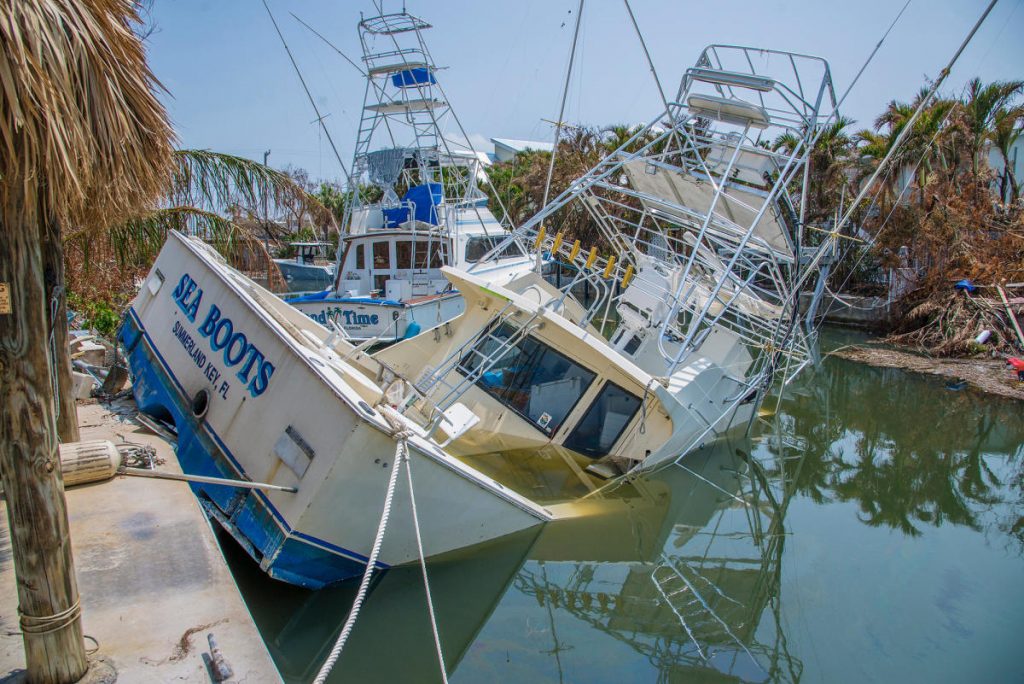
Notable Capsizing Incidents
In recent years, there have been several capsizing incidents, some of which have resulted in significant loss of life and damage to the vessels involved. One such incident was the capsizing of the Costa Concordia , a cruise ship carrying over 4,000 passengers and crew, which ran aground off the coast of Italy in 2012. The disaster led to the deaths of 32 people and required a complex salvage operation.
Another example is the Golden Ray, a cargo ship that capsized off the Georgia coast in 2019. The incident was caused by incorrect calculations about the vessel's stability, resulting in more than $200 million in damage. The salvage operation for the Golden Ray, which began in 2020, is ongoing.
Capsizing can also be particularly tragic when involving vessels transporting migrants. For instance, in the Mediterranean Sea, numerous overcrowded boats carrying migrants have capsized, resulting in hundreds of fatalities. These disasters highlight the dangers faced by migrants attempting to reach Europe on unsafe vessels.
The Seacor Power, a lift boat, capsized off the coast of Louisiana in April 2021 during a storm. At the time of the incident, the boat had 19 people aboard; six were rescued, one was found dead, and 12 more went missing. The incident raised concerns about safety regulations and vessel design in the offshore energy industry.
In summary, capsizing incidents can result from a variety of factors, such as incorrect stability calculations, overcrowding, and severe weather conditions. They often lead to significant loss of life and damage to the vessels involved, highlighting the need for improved safety measures and vigilance when operating or traveling on any vessel at sea.
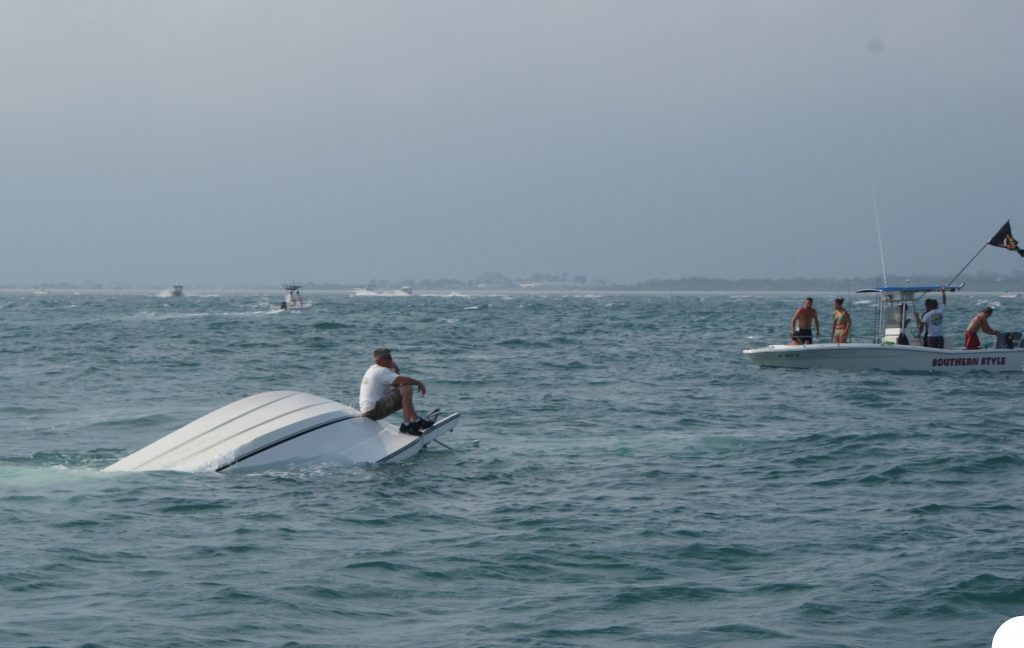
Capsizing in Context
Capsizing refers to the act of a boat or ship overturning, usually accidentally, while on water. It is a term commonly used in the maritime industry and is an essential concept to understand when discussing boat safety. Capsizing can be both a transitive verb, "to cause to overturn," and an intransitive verb, "to become upset or overturned" as defined by the Merriam-Webster dictionary .
The term "capsid" is unrelated to capsizing. Capsid is a term in biology, referring to the protein shell surrounding a virus's genetic material. The correlation between the term "capsid" and "capsizing" is only phonetic, and they have entirely different meanings and applications.
When discussing capsizing in Spanish, it is vital to use the appropriate adjectives and terminology. In this language, capsizing is referred to as "volcar" or "zarandear," and proper usage will ensure clear communication among Spanish-speaking individuals in the maritime industry.
In the study of language and linguistics, corpora play a significant role in understanding word usage and context. Corpora are large collections of written and spoken texts, which help researchers analyze language patterns. The Cambridge Dictionary cites capsizing as "to ( cause a boat or ship to) turn upside down by accident while on water", providing an example of the term's usage in context.
Cambridge University Press, one of the world's leading academic publishers, is a valuable resource for materials related to capsizing and maritime safety. The institution's extensive collection of publications offers valuable information and insights on the subject, which contributes to a deeper understanding of the nuances and importance of capsizing as a topic.
When using the term "capsizing" in any language or context, it is crucial to apply it accurately and with proper understanding. Through the study of linguistics, dictionaries, and academic publications, the importance of clear communication and accurate language usage can be emphasized, ensuring that maritime safety and knowledge are upheld to the highest standards.
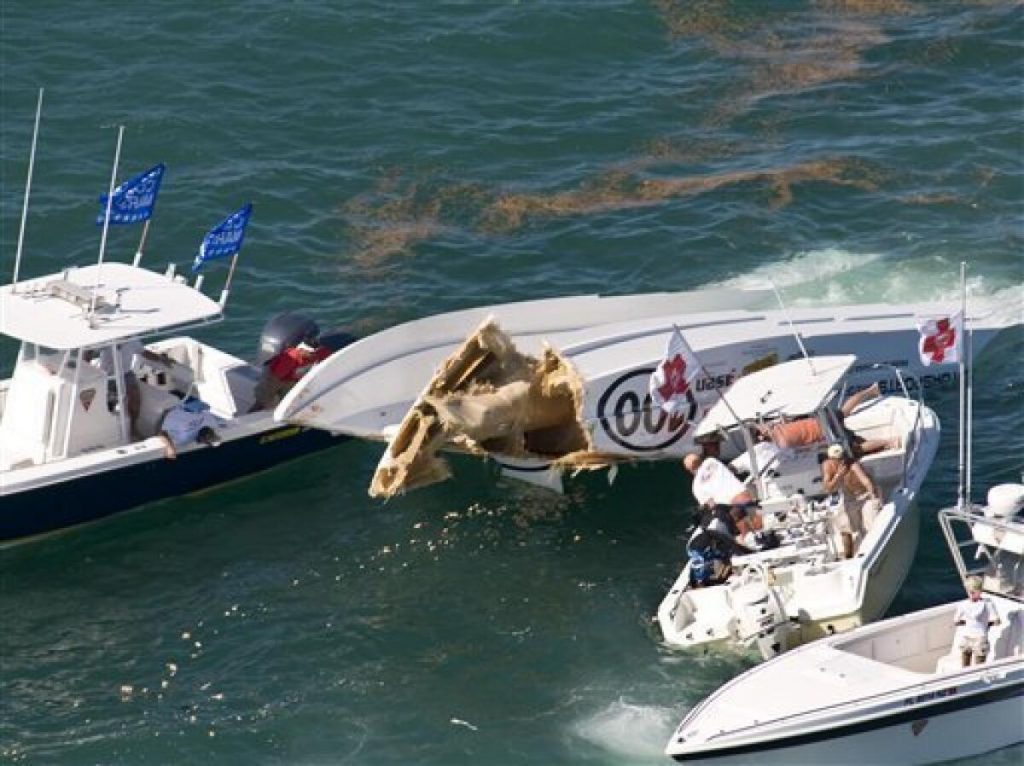
Preventing Overturns
One of the most critical factors in preventing capsizing or overturning of a boat is understanding and maintaining the vessel's stability. A stable boat has a low center of gravity, which helps it to stay upright even in challenging conditions. Both the design of the hull and the placement of objects within the boat, such as passengers, cargo, and equipment, significantly impact stability.
To maintain actual stability, it is essential to avoid overloading your boat. Distribute the weight in the boat evenly, not only from port to starboard but also from bow to stern and throughout the hold , ensuring the vessel is properly balanced. Overloading or uneven weight distribution can cause the boat to tilt, making it susceptible to pitch and capsize when navigating through waves or during sudden maneuvers.
The deck should be cleared of any unnecessary or loose items that could shift or slide during operation, creating an imbalance in the boat. Make sure that any storage compartments or tanks are secured, as their unexpected movement can also impact your boat’s stability.
When operating a boat, it is essential to be mindful of the conditions on the water. Waves or wind can dramatically affect your boat's stability, mainly if your vessel has a high deck or a raised center of gravity. Keep an eye out for unexpected changes in weather and be prepared to adjust your navigation as needed.
In case your boat flips and becomes a turtle, meaning it turns upside-down, your best chance of survival is to stay calm and prepare to exit the vessel as quickly and safely as possible. Orient yourself to the surrounding water and find your way to the surface.
Lastly, make sure you are familiar with your boat's capabilities and limitations. Each vessel is designed differently, affecting its overall stability. Know your boat's specific features, such as the design of the hull , deck , and bow , along with its recommended passenger and cargo capacities, to ensure a safe and enjoyable experience on the water.
By following these guidelines and understanding your boat's design and stability, you can significantly reduce the risk of capsizing or overturning, ensuring a safe and enjoyable boating experience for everyone onboard.
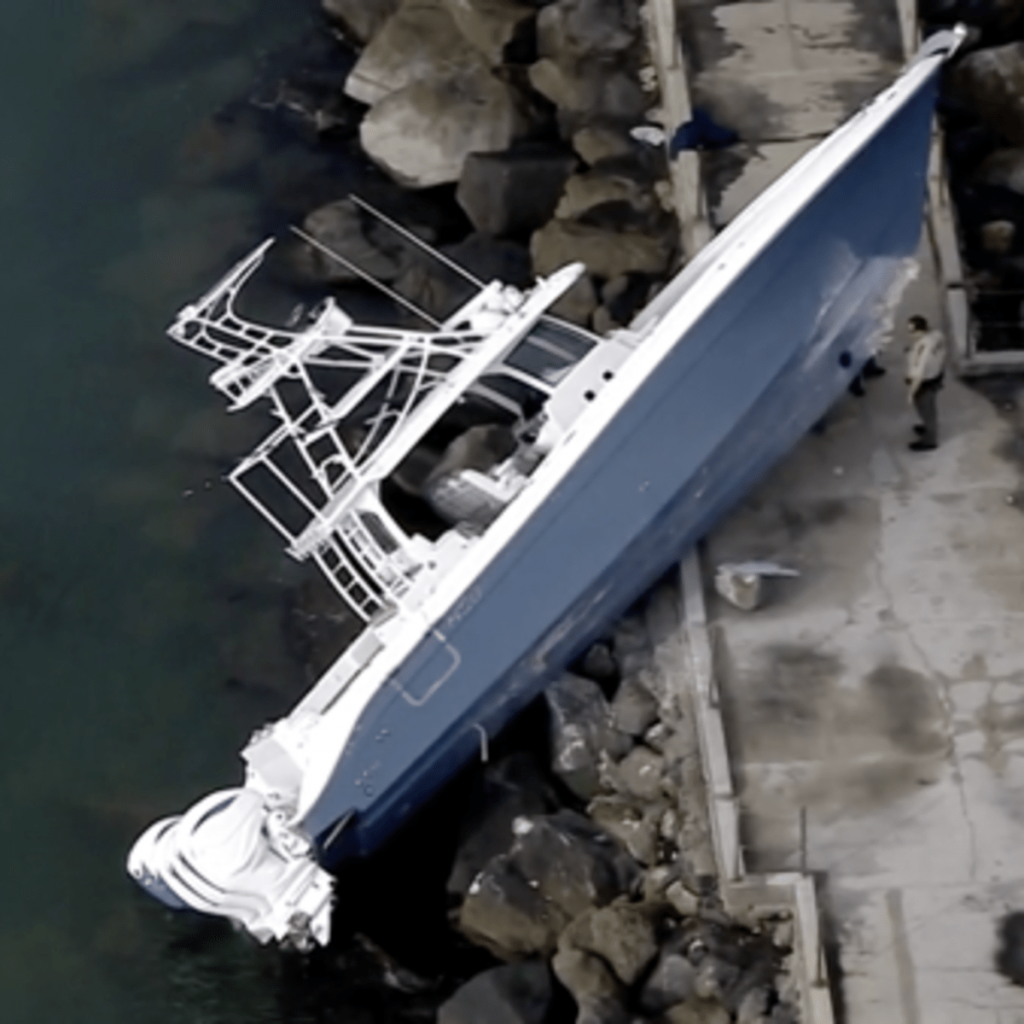
The Aftermath of a Capsize
When a capsize occurs, coping with the immediate consequences is crucial for the safety of those onboard. In most cases, passengers will find themselves submerged with the overturned vessel, so finding an exit and locating life jackets becomes a priority. It's important to remember that the port (left) side of a sailboat should still be accessible even if the vessel is overturned.
Once the crew is safely out of the capsized sailboat, assessing the situation is the next step. While some capsized vessels may be salvageable and can be righted, others might be beyond saving, already sinking or even sunk. In such cases, the emphasis shifts to finding rescuers and staying afloat until help arrives. Maintaining communication with the shoreline or nearby boats can be a challenge, but leveraging any available radio equipment or flares can make a significant difference.
Capsized vessels are generally investigated by authorities in order to determine the cause of the incident. In some cases, search and rescue operations may continue for several days, as documented by news reports . The US Coast Guard and local marine services often work in tandem to conduct search and rescue missions, braving choppy waters and other hazards to help locate missing individuals.
Throughout the entirety of the aftermath, remaining calm and clear-headed is key to effectively navigating this tumultuous event. Knowledgeable sailors understand the risks involved in sailing, and proper preparation can make a difference in the outcome of a capsizing. With appropriate training, skills, and equipment, those onboard can confront capsizes with confidence and increase their chances of a safe resolution.
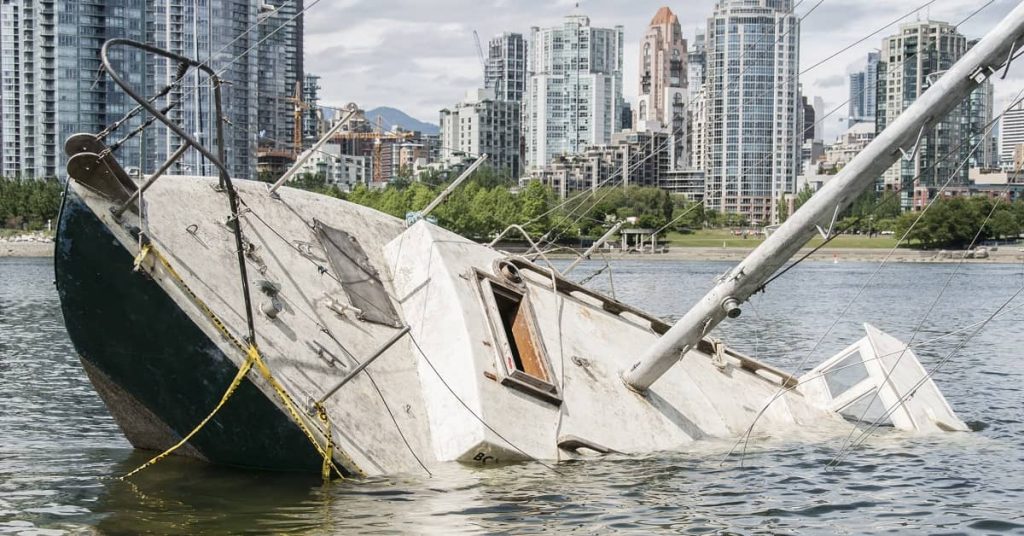
Frequently Asked Questions
How can i prevent a boat from capsizing.
To prevent a boat from capsizing, it is essential to follow safety precautions and maintain stability. First, be aware of the surrounding conditions, such as high waves or strong winds, and avoid them if possible. Ensure that all gear is secured and everyone on board is wearing a life jacket CGAA . Additionally, distribute weight evenly across the boat and avoid overloading or sudden movements that could compromise its balance.
What are the common causes of capsizing?
Common causes of capsizing include wave action , high winds, abrupt turns, and improper weight distribution. Additionally, a boat may capsize if it is structurally compromised, inadequately maintained, or encounters large waves or other hazardous conditions.
How do you recover from a capsized boat?
Recovering from a capsized boat depends on the size and type of boat, as well as the severity of the situation. Small sailboats, such as dinghies, can often be manually righted by their crew Wikipedia . In the event of a more severe capsizing, the priority becomes the safety of the passengers and crew. Assess the situation and risks, and follow the guidance of the captain or designated crew member CGAA .

Is it possible for large ships to capsize?
Yes, large ships can capsize, although it is relatively rare. Due to their size and engineering, large vessels often have more built-in stability mechanisms. However, in extreme conditions or if the ship's structural integrity is compromised, capsizing can still occur Ocean Marine .
What are the safety measures to follow during a capsizing incident?
During a capsizing incident, the primary objective is to ensure the safety of all passengers and crew members. Always wear life jackets, maintain clear communication, and follow the directions of the captain or designated crew member. If abandoning the vessel becomes necessary, gather essential supplies, stay together, and try to stay afloat using flotation devices until rescue arrives CGAA .
How does the design of a boat affect its stability and capsizing risk?
The design of a boat can significantly impact its stability and risk of capsizing. Factors such as hull shape, materials, and center of gravity are crucial in determining its ability to withstand external forces or recover from a tipping motion. Proper engineering, regular maintenance, and attention to safety features all contribute to a boat's stability and lower the risk of capsizing Marine Insight .
- Capsizing - Wikipedia ↩
- Kayak Safety - American Canoe Association ↩
- Ship - Dynamic Stability, Buoyancy, Trim | Britannica ↩
- Maritime Safety Management - International Maritime Organization ↩
- Chapter 8 - Keep your vessel stable - Transport Canada ↩
- Tips to Avoid a Speedboat Accident - BoatUS Magazine ↩

Has a Rogue Wave Ever Hit a Cruise Ship? (Can it Survive?)
Rogue waves can be huge and appear out of nowhere. If you are new to cruising or have any concerns after hearing about these freak waves, you may wonder if a rogue wave has ever hit a cruise ship. And if so, what happened? Did it survive or capsize?
We look at some of the most famous interactions between rogue waves and cruise ships, discover just how big they can be, and find out what happens if and when they ever hit a cruise ship.
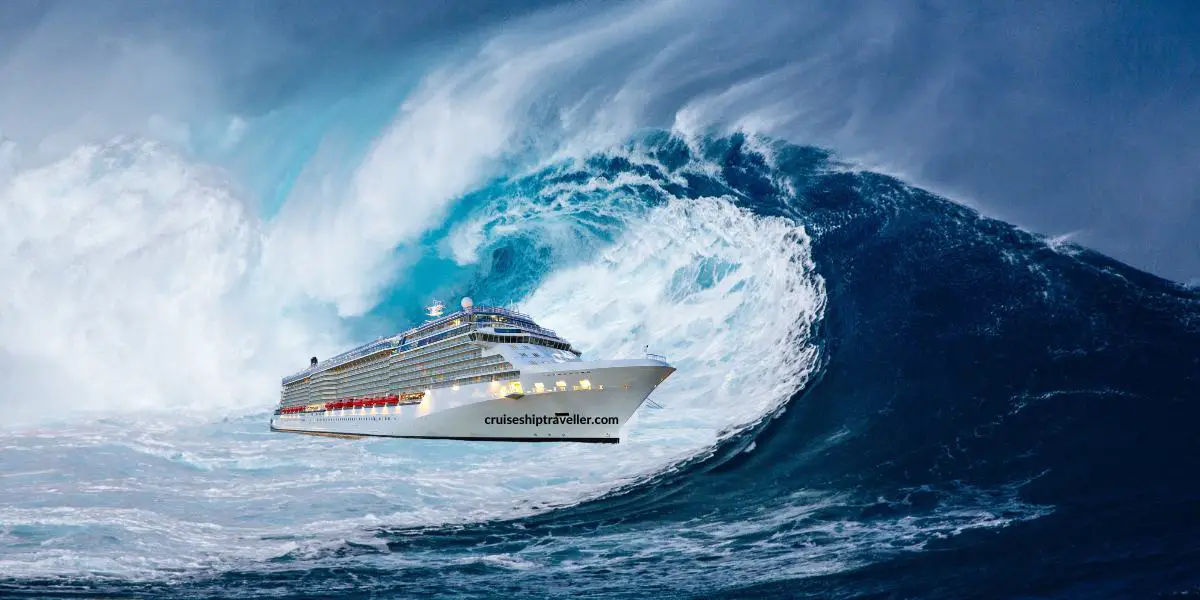
What is a Rogue Wave?
A rogue wave is a rare extra-large wave appearing on the ocean surface without warning. They are not restricted to the seas and can occur on large open-water bodies such as lakes.
Rogue waves are defined as waves that are at least two times the significant wave height of the area.
The significant wave height is the average of the largest third of waves over a given period.
This makes rogue waves significantly larger than other waves in the area.
Rogue waves can be extremely dangerous for small and large vessels such as cruise ships and even oil rigs.
Rogue waves are also known by many other names that signify huge waves, including:
- Abnormal waves
- Episodic waves
- Extreme waves
- Freak waves
- Killer waves
- Monster waves
If a rogue wave is seen on the coastline, they are sometimes called a “sneaker wave” or a “king wave” in Australia.

How Large Can Rogue Waves Be?
The rogue way that hit Queen Elizabeth 2 was estimated to be up to 96ft in height, possibly the largest rogue wave ever witnessed.
Beating that was when a fishing boat was hit in 1991, and a series of buoys in the area recorded a rogue wave at 100.7 feet .
Other accounts of rogue waves report them to be over 50ft to 70ft.
It’s quite possible more rogue ways have reached more than 100 ft in size but the odds of them ever being in the vicinity of a cruise ship are very low.
What Causes a Rogue Wave?
The causes of rogue waves are still largely unknown, but scientists believe they are caused by a combination of factors.
One theory is that rogue waves are created when two different ocean swells combine to create a larger wave. This can happen when two weather systems with different wind speeds and directions interact.
Another theory is that rogue waves can be created due to strong winds blowing over a long fetch of water. For example, if a low-pressure system moved across the ocean with high winds. The long fetch of water will create large swells which can combine to form a rogue wave.
Rogue waves aren’t just found in rough seas, they have also been known to occur in relatively calm sea conditions.
Can a Rogue Wave Sink a Cruise Ship (Or Capsize)?
Given that we have highlighted rogue waves can reach 100ft, it is entirely plausible that a rogue wave could capsize or sink a cruise ship, although the likelihood of this happening is extremely small.
The force of the water hitting the ship’s side at high speed would be enough to cause the cruise ship to tip over .
The weight of the water would also cause the ship’s hull to buckle and possibly break apart.
The pressure from the rogue wave could also cause severe damage to any windows and external features of the ship.
Inside the ship, passengers could be injured or even killed if thrown around by the force of the wave and hit by any internal objects.
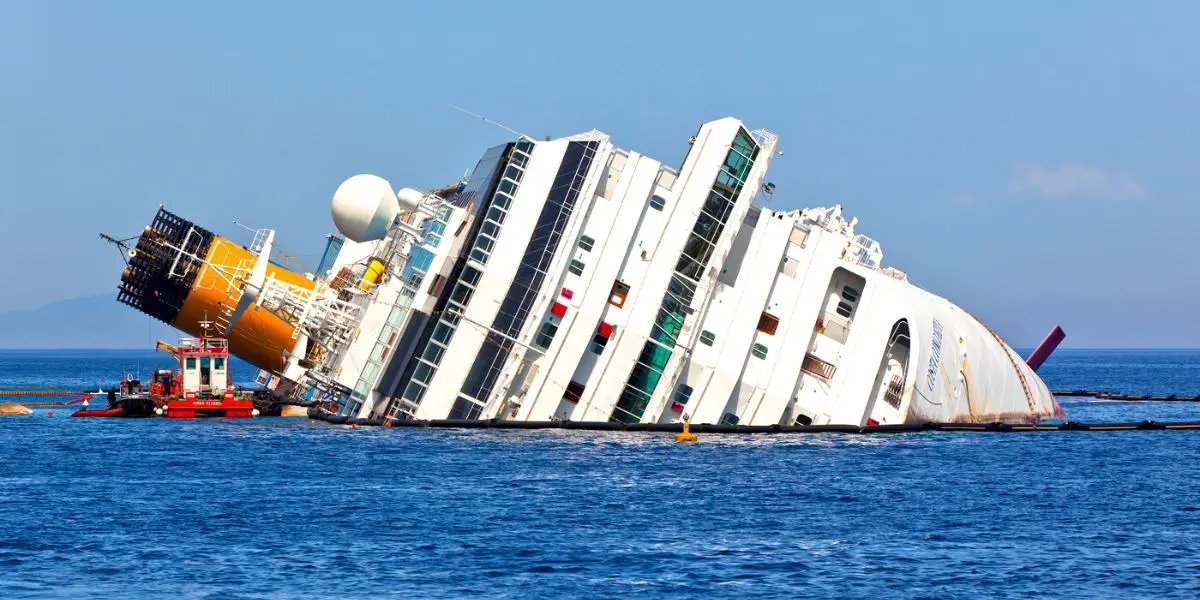
Has a Rogue Wave hit a Cruise Ship?
There have been five recorded instances of a rogue wave hitting cruise ships or passengers carrying ocean liners (QE2). There were no reported casualties, and all five ships survived to sail for many more years after.
Viking Polaris
In December 2022, an expedition cruise ship sailing on the Antarctic was hit by a rogue wave. Windows were smashed on deck 2 on the port side of the ship.
A 62-year-old passenger has died after sustaining injuries from the broken glass. 4 other passengers were treated for injuries sustained from the accident.
One of the passengers reported how the rogue wave hits the cruise ship and that it took the brunt of the wave without it rocking the ship back and forth. She was surprised at how stable it remained.
You can watch the NBC news report here:

Holland America’s MS Prinsendam
In 2007 the Holland America cruise ship MS Prinsendam (now MS Amera ) was hit by a rogue wave estimated to be 39ft high .
The ship, which at the time had a capacity of 835, was struck by a freak wave in Cape Horn, Chile. Approximately 40 people were injured, with some requiring hospitalization.
MS Bremen and MS Caledonian Star
In 2001 Bahamian-registered cruise ships MS Bremen and MS Caledonian Star were both caught in a rogue wave in the South Atlantic Ocean.
Both were hit by a rogue wave around 98 feet high . Both ships suffered damage, including smashed bridge windows and destroyed navigation and communications equipment.
The Bremen was adrift for 2 hours with no propulsion, while the Caledonian Star had to be tugged by the Argentinian Navy at the Argentine port of Ushuaia.
Both ships served many more years as sea vessels, and the Bremen is still sailing.
Queen Elizabeth 2
In September of 1995, the Cunard line Queen Elizabeth 2 ocean liner was hit by an estimated 92 to 96-foot high rogue wave caused by Hurricane Luis while crossing North Atlantic Ocean.
Although not technically cruise ships, ocean liners like the Titanic was , are built even more robustly to cope with the roughest seas on transatlantic crossings.
The freak wave hit the ship in the early hours, 200 miles off Newfoundland, as it was carrying almost 3000 passengers. The cruise captain had previously requested all passengers stay in their quarters due to the hurricane conditions, and many would have been in their beds.
The ship took an almighty hit over the bow and subsequent hits by two more large waves. Amazingly no one was injured.
Some photos of the damage, as well as first-hand experiences, can be read here .
On the page, someone who claimed to be “Chief Cashier on that Voyage” stated:
” If you saw the film The Perfect Storm and the scene with the fishing boat climbing up this enormous wave then that was us. “
Here’s a clip of the Giant wave to give you an idea of the experience that he was referring to:
MV Explorer
On the 26th of January 2005, the cruise ship MV Explorer, part of the Semester at Sea program, was hit by a 50ft rogue wave that smashed windows on the bridge, shorted navigational systems, and resulted in two engines failing.
The mid-sized cruise ship had approximately 700 students onboard at the time.
You can see a video of the aftermath and an example in our post of how a cruise ship does not tip over. Let’s just say even the aftermath was a scary experience, let alone being hit by the freak wave.
Further below, we have a video with footage the students filmed while in the ship after being hit by the freak wave.
Has a Rogue Wave Sunk a Cruise Ship?
While rogue waves are undoubtedly responsible for the sinking of smaller ships over the years, it’s very hard to know for certain if a rogue wave was the cause in many cases.
There are many accounts of ships going missing in the past without a trace, and it’s possible that some of these were due to rogue waves.
However, there have been no recorded cases of a rogue wave sinking a cruise ship.
The most likely reason for this is that technology has improved greatly over the years, and we are now better able to forecast weather and wave conditions in a way that would enable the crew and captain to take appropriate action to position the ship.
This means that cruise ships can avoid ocean areas where rogue waves are more likely to occur.
Albeit the real danger of rogue waves is that they are such sudden and unpredictable events that can appear without warning, there is only so much action a crew can take to avoid them.
Remember, in the event of a ship being damaged by a hit, cruise ships are equipped with enough liferafts and lifeboats for everyone .
Rest assured, cruise ship captains are some of the best ship captains in the world and your safety is paramount.
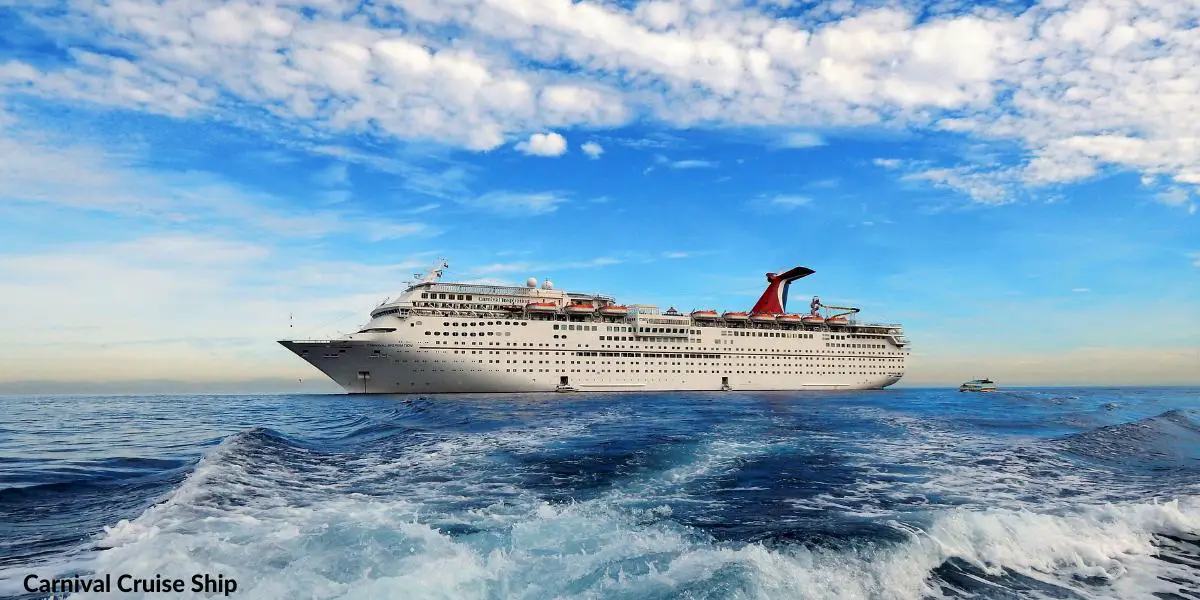
What Would Happen if a Rogue Wave Hit a Large Cruise Ship?
Many people wonder what would happen if a cruise ship was hit by one of the largest ever rogue waves.
There are many videos online of large waves hitting cruise ships, but they are just that large waves, nothing like being hit by a true rogue wave.
While there is no video evidence of a rogue wave hitting a cruise ship, the scenario has been played out on the big screen with huge modern-day cruise ships like those built by Royal Caribbean, such as Wonder of the Seas and Symphony of the Seas.
Rogue Waves Hitting Cruises Ships
For those curious this clip from the movie Poseidon shows a rogue wave hitting a cruise ship and causing it to capsize.
Although it’s worth noting, this is pure fiction, and the size of the rogue wave is highly exaggerated in relation to the size of the ship. In reality, a rogue wave has never capsized a modern cruise ship.
A huge rogue wave has hit a passenger ocean liner (Queen Elizabeth 2), which came away relatively unscathed.
What Happens After Being Hit By a Rogue Wave?
Although the video below doesn’t show the cruise ship being hit by the rogue wave, it does re-enact the moment and includes real video footage of passengers dealing with the aftermath.
How Big of a Wave can a Cruise Ship Handle?
Modern cruise ships typically handle waves of up to 50 feet.
Cruise ships typically encounter waves of 10 to 15ft without most passengers barely realizing it.
What Are the Chances of a Rogue Wave Hitting a Ship
There are typically over 310 cruise ships sailing at any given time, with an estimated 25 million people taking a cruise each year.
The odds of a rogue wave hitting a cruise ship are extremely low, which is why we never hear of the event occurring.
Rogue wave events are relatively rare given the size of the oceans combined, and when they do happen often, there are no ships within the vicinity, let alone a cruise ship.
Can a Cruise Ship Survive a Rogue Wave?
While it’s very unlikely a rogue wave will hit a cruise ship, if one did, the chances are that the ship would survive as has been the case in the real-life examples we covered above.
The design of the cruise ships keeps them afloat in the roughest of seas would see them through, although a rogue wave far exceeds the usual expectations a cruise ship is expected to encounter.
How to Survive a Rogue Wave on a Cruise Ship?
As a passenger on a cruise ship potentially being hit by a rogue wave, the safest place to be would be your stateroom, this will help protect you from being thrown around or hit by flying debris, falling decor, or sliding furniture.
Stairwells and hallways are also safer locations to gather as there is less chance of being thrown larger distances and being hit by falling or moving objects. This is where students were told to gather on the MV Explorer after it was hit by a rogue wave and the ship lost propulsion amidst very stormy seas.
If you are on deck, hold on to something sturdy and stay low to the ground.
Pay close attention to listening out for any instructions from the captain over the loudspeakers. Passengers may be asked to put on lifevests and possibly make their way to the deck with the lifeboats if abandoning the ship is a possibility.
What Size Rogue Wave can Sink a Cruise Ship?
Cruise ships come in all sizes, from carrying just a few hundred passengers to those that can accommodate over 6,000 guests.
The chance of a rogue wave sinking any size cruise ship is highly remote. The size of the rogue wave would have to be more than 70-100ft and hit the cruise at precisely the right angle. Even then, it’s possible the ship would remain afloat as they are designed to do so.
The larger the cruise ship, the more stable it is in the water and the less chance of it being sunk by a rogue wave.
The main cruise lines, Royal Caribbean, Carnival, MSC, Norwegian, Celebrity Cruises, Princess Cruises, and even Disney, have never had a ship even hit by a rogue wave and are of such sizes they should cope well if ever they were to encounter one.
However, as we covered above, one of Holland America’s cruise ships, the MS Prinsendam, was hit in 2007.
How is a Rogue Wave Different from a Tsunami?
A rogue wave is a one-off, large ocean wave that is not caused by an earthquake like a tsunami. They can appear out of nowhere and without warning but only last briefly.
Tsunamis are often caused by the movement of land, usually an ocean floor, that leads to a massive displacement of water and causes the seas to move at high speeds over a large area.
Unlike rogue waves, tsunamis can be barely noticeable on the surfaces of the seas. This makes them no threat to ships out at sea but can cause devastation to coastal areas as the waves increase in size as they come ashore.
Any cruise ships in ports or harbors would be at risk of being damaged in the path of a tsunami reaching land.
Frequently Asked Questions
Where do rogue waves occur most often.
Rogue waves are known to occur in the Atlantic Ocean, the North Sea, and the southeast coast of South Africa.
How Many Ships Have Sunk Because of Rogue Waves?
While no cruise ships have been sunk by rogue waves, other types of ships have.
One of them was the Great Lakes freighter SS Edmund Fitzgerald which is thought to have been hit by a rogues wave on Lake Superior, one of the more expensive Lakes cruises . Although thankfully, not caused any cruise ships to sink on the Great lakes.
This also highlights that rogue waves don’t just pose a risk at sea but on any open body of water.
The only other instance of a rogue wave sinking a ship was when the Andrea Gail, a fishing boat, sank on the coast of Nova Scotia in 1991 where a series of buoys reported a wave 100.7 feet high !
You can find a full list of ship and rogue events here , the vast majority of which did not sink.
How Many Ships Have Capsized Due to Rogue Waves?
Since the year 2000, they have only been a couple of reports of boats and ships capsizing by rogue waves, and neither were cruise ships.
The only ship was in November 2000 when a 56ft research vessel, the R/V Ballena, was struck by a rogue wave near Point Conception off Santa Barbara, California. The ship was destroyed, but all the crew managed to survive.
Related Posts
- How do Cruise Ships Get Into the Water – Find out how cruise ships are launched.
- Can You Fish off a Cruise Ship?
While rogue waves are an interesting topic, the chance of one hitting a cruise ship is so remote it’s not something to be of concern.
Cruise ships are designed to withstand huge waves and the roughest seas in storms, so even if a rogue wave did hit, the ship would remain afloat, and damage would be minimal.

What is the Draft of a Cruise Ship? (and Why Does it Matter?)

How Many Doors on a Cruise Ship? (Yes, I Counted)
Leave a comment cancel reply.
Your email address will not be published. Required fields are marked *
Save my name, email, and website in this browser for the next time I comment.

Can a Cruise Ship Capsize in a Storm?
By Michael Ferguson
It is an important question to consider when planning a cruise holiday.
Cruise ships are designed to withstand bad weather, but they are not immune to its effects.
Cruise ships can experience various storms at sea, including hurricanes and typhoons. The vessels are built with double hulls and extra features that help them remain stable in rough conditions.
However, they can still be affected by strong winds and waves.
The most common way for a cruise ship to capsize is when it takes on too much water or gets hit by a rogue wave. When this happens, the vessel can lose its stability and become top-heavy. A sudden shift in weight or an imbalance of the vessel’s center of gravity can cause it to overturn or become unstable.
Safety Precautions
Cruise ships have several safety precautions in place to reduce the chance of capsizing during storms. Ships are equipped with stabilizers that help keep them upright in rough seas. Additionally, the crew will take measures such as reducing speed, avoiding certain areas and re-routing if necessary.
Despite all of these precautions, it is still possible for cruise ships to capsize during a storm if they encounter unexpected circumstances or extreme weather conditions.
In conclusion, it is possible for a cruise ship to capsize in a storm. However, modern cruise ships have numerous safety features that reduce the risk of this happening. As long as passengers follow all safety measures and exercise caution when travelling on the open seas, they should be able to enjoy their cruise without fear.
Backpacking - Budget Travel - Business Travel - Cruise Ship - Vacation - Tourism - Resort - Cruise - Road Trip - Destination Wedding - Tourist Destination - Best Places
London - madrid - paris - prague - dubai - barcelona - rome.
© 2024 LuxuryTraveldiva
How far can a cruise ship tilt before capsizing?
Faqs about cruise ship tilting, 1. can a cruise ship actually capsize, 2. what are the main reasons for a cruise ship to tilt, 3. how often do cruise ships experience significant tilting, 4. what measures are in place to prevent cruise ships from capsizing, 5. how can passengers be safe if a cruise ship tilts, 6. are there any warning signs of an imminent tilt, 7. has there been any notable cruise ship tilting incidents in the past, 8. can cruise ship tilting be compared to a sinking ship, 9. are there any guidelines or regulations that govern cruise ship stability, 10. how do cruise ships deal with rough sea conditions, 11. are larger cruise ships more prone to tilting, 12. what precautions should passengers take during rough sea conditions, how far can a cruise ship tilt before capsizing.
Cruise ships are marvels of modern engineering, designed to provide luxurious and comfortable travel experiences on the high seas. However, many people wonder just how much these massive vessels can tilt before they are at risk of capsizing. While cruise ships are built to withstand a certain degree of incline, there are limits to how far they can tilt without endangering the safety of passengers and crew.
Generally, cruise ships are designed to stay in an upright position, and they have stabilizers to help counteract the natural forces of the sea. These stabilizers work by using fins beneath the waterline to generate resistance against the ship’s movement, reducing swaying and tilting motions. However, there are still situations where a cruise ship may tilt beyond its normal range.
The amount a cruise ship can tilt before capsizing depends on various factors, including the ship’s size, stability, and the conditions it is exposed to. Typically, most cruise ships are designed to tolerate around 15 to 30 degrees of tilt before reaching a dangerous tipping point. Beyond this angle, the ship’s stability becomes compromised, and there is a real risk of capsizing.
Yes, while it is highly unlikely, a cruise ship can capsize under extreme circumstances. However, it’s important to note that modern cruise ships are designed with multiple safety features to prevent such incidents. These include watertight compartments and advanced stabilization systems.
Cruise ships may experience tilting due to external factors such as rough sea conditions, strong winds, or the impact of large waves. Mechanical failures or errors in ship operations can also contribute to tilting, although these are rare occurrences.
Significant tilting incidents on cruise ships are relatively rare. Modern cruise ships are equipped with advanced technology and systems to anticipate and counteract potential tilting situations. However, in highly uncommon instances of severe weather or unforeseen circumstances, a cruise ship may experience substantial tilting.
Cruise ships are built with multiple redundancies and safety features to prevent capsizing. These include advanced monitoring systems, stability controls, and adherence to strict safety regulations. Additionally, crews are trained extensively to handle emergency situations and employ immediate corrective actions when needed.
Passenger safety is of paramount importance to cruise ship operators. In the event of tilting, onboard crew members are trained to implement safety protocols, such as ensuring passengers secure themselves with life jackets and seek shelter in designated safe areas of the ship. Additionally, the crew will actively work to stabilize the ship and prevent further tilting.
Modern cruise ships are equipped with sophisticated monitoring systems that can detect changes in stability and provide early warnings to the crew. These systems monitor factors like wind speed, wave height, and ship motions to anticipate potential tilting situations.
While cruise ship tilting incidents are rare, there have been a few notable cases in the past. The most well-known is the 2012 Costa Concordia disaster, where the ship capsized off the coast of Italy. However, it’s essential to recognize that such incidents are exceptional and represent extremely rare occurrences.
Cruise ship tilting and sinking are two distinct scenarios. Tilting refers to the leaning or inclining of a ship due to external forces, while sinking involves a ship going underwater. While tilting can lead to a loss of stability, and in rare cases, capsizing, most situations do not progress to sinking.
Yes, there are numerous guidelines and regulations in place to ensure the stability and safety of cruise ships. International maritime organizations, such as the International Maritime Organization (IMO), set forth regulations that govern ship design, stability criteria, and operational standards to mitigate risks and enhance passenger safety.
Cruise ships are designed to navigate various sea conditions, including rough seas. The captain and crew continuously monitor weather patterns and engage in route planning to avoid severe weather whenever possible. Additionally, modern ships are equipped with advanced stabilization systems that help minimize the effects of rough seas.
While larger cruise ships may appear more imposing, their size does not necessarily make them more prone to tilting. In fact, larger ships often have more stability due to their increased hull area and advanced stabilization systems. These features help counteract the forces of nature and enhance overall ship stability.
During rough sea conditions, passengers can take several precautions to ensure their safety and comfort. It is advisable to stay in the lower parts of the ship, where the rocking motions are minimal. Following crew instructions, securing personal belongings, and using handrails when moving around the ship are also important safety measures.
In conclusion, while cruise ships are designed to withstand a significant degree of tilting, there are limits to how far they can tilt before reaching a dangerous tipping point. Modern cruise ships are equipped with advanced stabilization systems and safety features to prevent capsizing. Crew members are extensively trained to handle tilting situations and ensure the safety of passengers. By adhering to strict regulations and employing advanced technology, the cruise industry continues to prioritize the well-being and security of those onboard.
About The Author
Mahan Dhillon
Leave a comment cancel reply.
Your email address will not be published. Required fields are marked *
Save my name, email, and website in this browser for the next time I comment.
The only cruise blog for the Middle East and South Africa

Can a rogue wave capsize or sink a cruise ship?
Rogue waves are massive, unpredictable, and often mythologized as ship-swallowing monsters. But can these legendary waves truly sink or capsize a modern cruise ship?

On July 26th, 1909, the ocean liner SS Waratah, midway on her dedicated Australia-UK run, departed Durban, South Africa bound for Cape Town carrying 211 passengers and crew. She was due in Cape Town on July 29 th , but never arrived.
Despite an intensive ocean search and rescue effort, she was never seen again. The reason for the ship’s disappearance off South Africa’s Wild Coast has never been confirmed, but one plausible theory is that she was struck by a rogue wave in bad weather and capsized without warning.

The waters off Southern Africa are renowned for their ferocity, with howling winds and rolling waves that grow to an immense size as they travel thousands of miles uninterrupted from Antarctica.
On the night that SS Waratah disappeared there was a tremendous gale, with a waves so high a Royal Navy frigate that left Cape Town to search for her had to turn back due to damage to the hull. These are condition ripe for rogue waves, and they occur far more often than commonly thought.
It’s therefore feasible Waratah encountered one that night. Rolling out of the darkness, it would have slammed into her with little warning. If it struck the ship beam on, it would have caused her to capsize. Loaded with a cargo of iron ore, she would have gone down with little fight.

The Poseidon Adventure 2005 TV series poster
Today, cruise ships offer passengers a luxurious and relaxing way to explore the world’s oceans. But rogue waves remain part of the popular imagination thanks to The Poseidon Adventure and its many remakes, and indeed remain a threat thanks to new research that has shown them to be far more common than was previously thought.
The idea of encountering a rogue wave can therefore be a source of anxiety for some passengers, but how common are they? And if one were to hit a modern cruise ship, would it sink like the fictional Poseidon, or indeed the ill-fated SS Waratah?
Understanding Rogue Waves
Rogue waves are massive, unpredictable, and often mythologized as ship-swallowing monsters. But can these legendary waves truly capsize a modern cruise ship? To answer this question, it’s important to explore the science behind rogue waves and their potential impact on cruise ships.
Rogue waves, also known as freak waves or monster waves, are exceptionally large and unexpected ocean swells that can reach heights of up to 100 feet (30 metres) or more. Rogue waves are not the result of a single, simple phenomenon but rather a complex interplay of factors.
They can occur in any ocean, but they are most commonly associated with areas where strong ocean currents meet opposing winds. These waves can also be generated when smaller waves merge constructively, creating a single, towering wave. They appear out of nowhere and have been the subject of countless maritime legends and real-life stories.
Encounters with Rogue Waves
In February, 1995 the ocean liner Queen Elizabeth II was struck by a 29-metre high rogue wave during a particularly severe storm in the North Atlantic. Captain Ronald Warwick described it as “a great wall of water… it looked as if we were going into the White Cliffs of Dover.”

The former Cunard ocean liner QE2 has had two encounters with rogue waves.
It’s unclear how bad the damage was to the ship, but unverified reports claim a mast was torn from her foredeck, and the windows of one of her forward-facing lounges were smashed. Interestingly, there are few reports of casualties, while an earlier 1993 incident in which QE2 was struck by a 30-foot rogue wave led to 50 injuries.
From first-hand accounts of the two incidents, it appears the larger wave struck the ship head-on, while the earlier smaller wave may have smashed into her side, which would explain the reports of a “freak tilt” that sent all manner of items crashing across her public rooms.
Conventional cruise ships have also been struck by rogue waves, not just ocean liners like QE2, built for the extremes of the North Atlantic. In 2010, Louis Majestic was hit by three 30-foot rogue waves in quick succession , smashing the forward lounge windows and killing two passengers. The video above shows the moment the third wave hit the ship.
In 2014 the ocean liner turned cruise ship Marco Polo of the now-defunct Cruise & Maritime Voyages was hit by what the cruise line called a “freak wave” , killing one passenger when windows in one of the ship’s restaurants smashed. Although the cruise line and media referred to the incident as a rogue wave encounter, the Bahama Maritime Authority, to whom the vessel was registered, later said an in-depth investigation had concluded the tragedy was unlikely to have been due to a rogue wave .

The alleged rogue wave that struck Viking Polaris smashed several cabin windows.
On November 29, 2022, an unusually large wave hit the cruise ship Viking Polaris as it was sailing through the Drake Passage in Antarctica’s Southern Ocean toward Ushuaia in Argentina. The force of the wave sent passengers flying, smashed several exterior windows, flooded some rooms and led to the death of at least one passenger. This wasn’t a confirmed rogue wave as no estimate was made of its size.
Once dismissed as a nautical legend, rogue waves are now understood to be a common feature of these particular sea conditions, and are believed to be responsible for as many as 200 losses of ships during the past two decades.

Modern cruise ships are inherently stable and difficult to capsize.
Modern Cruise Ship Design
It’s crucial to understand that modern cruise ships are designed and built with safety as a top priority, making encounters with true rogue waves the size of that which hit QE2 highly unlikely. These vessels undergo rigorous testing and adhere to strict regulations to ensure their stability and seaworthiness.
Cruise ship engineers consider a wide range of potential hazards, including extreme weather conditions like rogue waves, when designing these floating cities. So that even if a real rogue wave were to hit a modern cruise ship, it would cause significant damage, but not sink it.
The Stability of Cruise Ships
One of the key factors that prevent cruise ships from capsizing in the face of rogue waves is their inherent stability . Cruise ships are equipped with advanced stabilizing systems, including gyroscopes and ballast tanks, to counteract the forces of rolling and pitching caused by waves. These systems help maintain the ship’s balance, making it highly resistant to capsizing.
Additionally, cruise ships are designed with multiple watertight compartments, ensuring that even if a breach were to occur, the ship would not sink entirely. This compartmentalization is a fundamental safety feature that allows cruise ships to stay afloat even in very challenging conditions.
Navigation and Weather Forecasting
Another critical aspect of cruise ship safety is advanced navigation technology and weather forecasting. Modern ships are equipped with radar, satellite communication, and meteorological systems that enable them to detect and track weather patterns, and captains are knowledgeable of the conditions that support the formation of rogue waves. Cruise ship captains can also often navigate around or through rough seas, avoiding the most hazardous areas (although this hasn’t eliminated misjudgement in recent years).

While rogue waves are indeed a fascinating and potentially dangerous natural phenomenon, the idea of them capsizing a modern cruise ship is highly unlikely. Of the 200 ships believed to have been sunk by rogue waves in the last two decades, none were cruise ships, for the simple reason that cruise ships generally avoid the kind of weather that can produce a rogue wave.
Cruise ships are also designed with a myriad of safety redundancies, incorporating advanced technology and engineering to ensure their stability and seaworthiness, while skilled and experienced crews and advanced navigation systems enable them to sail around or ahead of severe storms. Apart from QE2, no large cruise ship has ever been struck by a rogue wave of 92 feet, but there have been several incidents involving smaller freak waves of 30 to 40 feet.
These incidents led to significant structural damage and even death in some tragic cases, but all the cruise ships in question remained fundamentally seaworthy. It’s worth noting, however, that QE2 was the greatest ocean liner ever built, and even the largest cruise ships are not nearly as a robust , so until one is struck by a 90+ foot wave, we won’t know just how much punishment they can take.
Share this:
- Click to share on Twitter (Opens in new window)
- Click to share on Facebook (Opens in new window)
Categories: Cruise Features , Cruise Industry , Cruise Lifestyle , News
Tagged as: cruise accidents , cruise ship , rogue wave
Published by Shaun Ebelthite
Founder and editor of Cruise Arabia & Africa. I try to create the best news and information specifically for cruise passengers taking cruises to and from Dubai (where I live) and South Africa (where I was born). You can contact me at shaun(at)cruisearabiaonline.com. View all posts by Shaun Ebelthite
Leave a Reply Cancel reply
Get in touch.
Email : shaun(at)cruise-arabia.com
Discover more from
Subscribe now to keep reading and get access to the full archive.
Type your email…
Continue reading
Is An Aircraft Carrier Bigger Than A Cruise Ship? Here's How They Compare
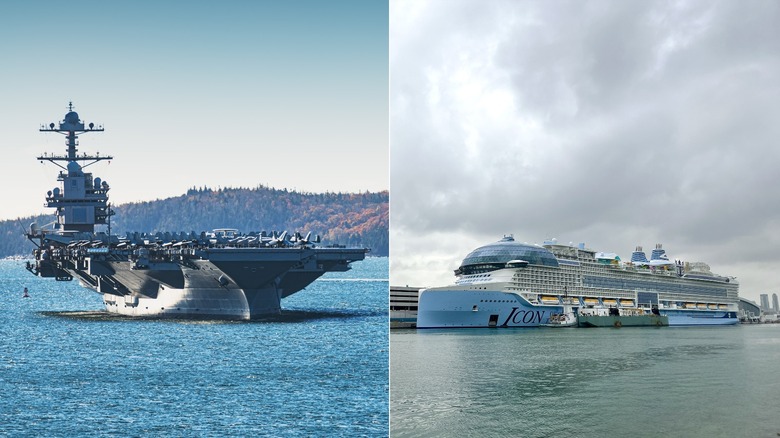
Aircraft carriers and cruise ships are some of the largest floating vessels in the world — both capable of carrying thousands of people on board. Cruise ships and carriers are engineering marvels decades if not centuries in the making as shipbuilding has advanced over the ages.
However, cruise ships and aircraft carriers differ massively in their purpose. Cruise ships are leisure vehicles, designed to bring tourists to many different ports and explore different places and countries, while at the same time having a good time between stops. On the other hand, aircraft carriers are naval vessels that countries use to project power and influence regional geopolitics, meaning the people aboard them aren't there to have a good time.
Both ships are massive floating cities, but which one is actually larger? Let's measure the largest examples of these boats.
What's the biggest cruise ship today?
At the time of writing, the title holder of the largest cruise ship in the world is Royal Caribbean International's Icon of the Seas. She is an Icon Class ship with a gross tonnage of 248,663 and entered service with the cruise liner in January 2024. This gives her a length of 1,196 feet or 365 meters — about four football fields long — and a width of 159 feet or 48 meters (about 11 cars long, at around 14.7 feet long per car). Royal Caribbean spent $2 billion to build her, and its CEO, Jason Liberty, describes her as the "biggest, baddest ship on the planet," according to CNBC .
However, the Icon of the Seas won't remain as the largest cruise liner for long. That's because her sister ship, the Star of the Seas, will have an expected gross tonnage of 250,880. She's currently under construction at Meyer Turku in Finland, with Royal Caribbean International expecting her to enter service in the summer 2025. A third Icon Class ship is slated for delivery in 2026, but we don't have much information on it right now.
The Icon of the Seas has a total of 20 decks, with 18 accessible to guests. However, not all decks contain rooms, of the 18 guest decks, only 12 have guest accommodations. The rest of the decks are reserved for amenities and crew.
What's the biggest aircraft carrier today?
The U.S. Navy claims that its newest aircraft carrier, the USS Gerald R. Ford (CVN 78) is the world's largest. It is the first ship in the Gerald R. Ford class of supercarriers and is designed to accommodate modern systems within its planned 50-year service life. The Gerald R. Ford has a length of 333 meters or about 1,092 feet — slightly shorter than the Icon of the Seas — and a beam of 40.8 meters or almost 134 feet. It also weighs a little less than 100,000 tons. This makes the carrier significantly slimmer and lighter than the cruise ship, but that's because aircraft carriers need to be as fast as possible.
This ship's primary mission is to deploy aircraft, but because it has such a short length of just 333 meters (versus the runways at U.S. Air Force bases, with the longest at Edwards Air Force Base with 4,579 meters), carriers use speed to get a brisk wind of over 30 knots blowing over the deck when launching planes, alongside the use of its catapult. The slimmer profile of an aircraft carrier allow it to go faster (which also means that it can get in and out of danger more quickly, too).
As for the price, the Gerald R. Ford class will cost the American taxpayer a cool $13 billion per ship . This is more expensive than the USS Nimitz , which it slated to retire in 2026, and has an inflation-adjusted price of over $11.5 billion.
How many people can fit in a cruise ship?
Aside from its size, we can also look at the number of people each ship can carry. After all, although the Icon of the Seas and USS Gerald R. Ford have almost the same length, it doesn't mean that they can carry the same number of people. The largest Royal Caribbean International cruise ship has 2,805 staterooms, meaning it can carry 5,610 guests if each room is occupied by two people.
However, the Icon of the Seas also has a few bigger rooms that can hold more people. If you fill all the rooms to the maximum, the ship's passenger capacity is at 9,302. And with its 2,350 total international crew to complement, that would mean that the Icon of the Seas has 11,652 souls on board when filled to the brim.
We must also remember that cruise ships aren't just floating motels. Instead, they're full-fledged entertainment venues with multiple amenities. The Icon of the Seas itself features 27 restaurants, 18 bars and lounges, six activity centers for kids and teens, and 24 other amenities, including a conference center, theaters, swimming pools, sports courts, to name a few.
How large is the crew of an aircraft carrier?
Aircraft carriers also have a large number of people aboard. But since they're military weapons, these are not tourists on a leisurely trip. Instead, they're mostly sailors and naval aviators, occasionally some marines and other personnel that are there to support the carrier's operations.
The USS Gerald R. Ford has enough accommodations for 508 officers and 3,789 enlisted personnel, for a total crew complement of 4,297. This is 1,715 less than the Nimitz's full complement of 6,012 people, showing how the Ford has streamlined its operations.
But aside from its crew, remember that aircraft carriers carry both fixed-wing and rotary-wing aircraft. The majority of the Icon of the Seas' space is occupied by leisure amenities. On the other hand, the USS Gerald R. Ford has an expansive flat top for launching multiple aircraft simultaneously and it also has spacious hangars to store and service loads of up to 90 planes, helicopters, and drones — including the F-35C , F/A-18E/F Super Hornet, E-2D Advanced Hawkeye airborne early warning radar, EA-18G Growler electronic warfare aircraft , and MH-60R/S helicopters.
What is the largest ship in the world right now?
The short answer to whether an aircraft carrier is bigger than a cruise ship is no, if you look at the biggest ships in their class. However, many smaller cruise ships will be dwarfed by the Navy's smallest actively serving carrier. But even though the Icon of the Seas and the USS Gerald R. Ford are behemoths in their own right, neither of them is the largest ship on the world to have been made (although they both made the top 10). Instead, this award goes to the oil carrier Seawise Giant, designed for shuttling oil from the Middle East to the United States. However, it has since been retired and sold for scrap in 2010.
As of today, the largest ship in service is the OOCL Spain, which is almost 400 meters long and can carry over 24,000 shipping containers. Next to it are four ships owned by the Mediterranean Shipping Company (MSC) — Irina, Loreto, Michel Cappellini, and Gülsün — all of which carry around 24,000 containers.
We might see larger cruise ships and carriers in the future, especially as Royal Caribbean International and the Navy still has several cruise ships and aircraft carriers on order. We might even see a larger carrier from other countries, as the U.S. Navy isn't the only one to field these mighty ships .
Video shows Carnival Freedom on fire, again. Two upcoming cruises were canceled. Here's what to know
The Carnival Freedom 's next two sailings have been canceled after the cruise ship, based out of Florida, caught fire . Again.
Carnival initially said there were no expected changes in its schedule but on Sunday afternoon announced cancellations of the Monday and Friday cruises out of Port Canaveral, which come during a busy spring break period.
"Regrettably, the damage is more than we first thought, and will require an immediate repair to stabilize the funnel, resulting in the cancellation of the March 25 and March 29 cruises from Port Canaveral," according to a statement issued by Matt Lupoli, Carnival Cruise Line's senior manager of public relations. "The funnel has been stabilized for the ship’s return to Port Canaveral overnight to disembark guests, and then it will go to the Freeport shipyard on Monday afternoon to begin the required repairs."
This is the second time in less than two years this cruise ship's funnel has caught on fire and disrupted the schedule.
Carnival cruise fire: Carnival Freedom's next two cruises from Port Canaveral canceled after exhaust funnel fire
When did the Carnival Freedom catch on fire?
The fire broke out on the port side of the ship's exhaust funnel area at about 3:15 p.m. Saturday, Carnival said.
The ship was 20 miles off Eleuthera Island, Bahamas. It was intended to call on the Carnival private island of Princess Cay but had rerouted toward Freeport due to adverse weather.
"The ship’s fire response team was quickly activated, and the ship’s captain also turned the vessel towards the heavy rain in the area to maximize the efforts to put out the flames," an earlier Carnival statement said. The fire was put out by 5:20 p.m., the cruise line said.
Why did the Carnival Freedom cruise ship catch fire?
Unknown at this time.
"Eyewitnesses reported the possibility of a lightning strike, and that is being investigated," Carnival said, "but cannot yet be confirmed."
Was anyone hurt in the Carnival Freedom fire?
The cruise line said there were no reports of passenger injuries, although two firefighting crew members were treated for minor smoke inhalation and part of the funnel fell onto Deck 10, according to Carnival.
There were about 3.700 passengers aboard.
Which Carnival Freedom cruises have been canceled?
While initially the cruise line said the schedule would not be affected, further investigation found more damage than suspected. Scheduled cruises for Monday, March 25 and Friday, March 29 have been canceled.
Can I get a refund for my canceled Carnival Freedom cruise?
"We sincerely regret the impact to our embarking guests, as we know they have been looking forward to their spring break vacation<' Carnival Cruises said in a statement. "We are providing all guests on both canceled cruises a full refund and a 100% future cruise credit, so they can come back and enjoy a future cruise with us. We also greatly appreciate the terrific guests who are currently sailing with us, for their outstanding cooperation and support."
Where is Port Canaveral?
Port Canaveral, Florida is located on a barrier island between the Banana River and the Atlantic Ocean just north of Cape Canaveral. The port is 54 miles from Orlando and 75 miles from Daytona Beach.
What is the funnel on a cruise ship?
A cruise ship exhaust funnel works as a smokestack to lift emissions away from the deck and from passengers and crew. They're often called stacks.
The Carnival Freedom debuted a new stylized winged funnel in October last year after a 16-day dry-dock refurbishment in Cadiz, Spain. Carnival cruise funnels are referred to as the whale tail.
Has the Carnival Freedom cruise ship caught on fire before?
A fire broke out in the funnel area in May 2022 while it was docked in Grand Turk. Three scheduled sailings were canceled while the ship was repaired at a shipyard in Grand Bahama.
The ship was carrying about 2,500 passengers at the time and a crew of about 1,100, according to the cruise line. There were no injuries reported.
Which cruise ship caught fire?
The Carnival Freedom caught on fire on Saturday, March 23.
The 110,000-ton vessel made its inaugural sail in 2007. The Freedom, which has 13 decks, can hold up to 3,754 passengers and 1,150 crew members.
Has a Carnival cruise ship ever sank?
No. But one has been shipwrecked.
On Jan. 13, 2012, the Costa Concordia struck a reef and capsized off the Tuscan island of Giglio. The ship, which was owned by a Carnival Corporation subsidiary, when the captain steered the 952-foot, 13-deck ship close to the shore to "impress the passengers" and tore a 160-foot gash in the port hull.
Captain Francesco Schettino was found guilty of manslaughter in 2015 and sentenced to 16 years in prison for the deaths of 32 passengers and crewmembers.
You won't be 'overcrowded by thousands of tourists': What to know about Montreal cruises

- Montreal is the largest city in Canada’s Quebec province.
- The city offers a relatively quaint cruise experience.
- The port welcomed just over 51,000 cruise guests in 2023.
On a recent afternoon, I strolled beside patches of purple flowers on a wooden walkway at the Port of Montreal. The Promenade d'Iberville green roof, with western red cedar decking and more than 24,000 aromatic and flowering plants, was built on top of the city’s main cruise terminal.
The effect was less industrial infrastructure – like many ports – and more charming urban parks.
Montreal may be the largest city in Canada’s Quebec province, but it offers a relatively quaint cruise experience. Bridges between Montreal and Quebec City block vessels with air draft – the distance from the waterline to the highest point on a ship – over 49 meters (or about 161 feet) from berthing at its facilities in Old Montreal.
The ships that visit are generally smaller (though the city can accommodate those with a maximum 50-meter (164 feet) air draft east of the Jacques Cartier Bridge).
“We are positioning Montreal as a niche port for luxury ships,” Yves Gilson, associate director of cruises at the Port of Montreal, told USA TODAY during a visit in May. Here’s what to know about sailing into and out of the city.
The cruise inventory tends to be upscale
Montreal typically welcomes ships carrying 2,000 passengers or less from several upscale cruise lines, which tend to operate ships with lower capacity. Those include Regent Seven Seas Cruises, Seabourn, Viking, Ponant and more. Though not a luxury brand, one of the city’s main clients is Holland America Line, which will send its 1,432-guest Volendam ship there this season.
The port welcomed just over 51,000 cruise guests in 2023. By contrast, its neighbor to the northeast, Quebec City, saw 154,000 passengers . Despite its smaller population, large ships from operators like Norwegian Cruise Line and Cunard Line will visit Quebec City this season (along with smaller vessels).
Jared Feldman, owner of travel agency Jafeldma Travel, added that it’s not just ocean cruise ships that stop in Montreal. “There are river cruises that can get in and out of there as well,” he said.
Gilson noted that the city “could absorb” traffic from bigger ships if not for the bridges. “But on the other hand, the experience for the guest is marvelous because you know they will not be overcrowded by thousands of tourists,” he said.
You can hit the ground walking
The main cruise terminal is close to many of the city’s popular attractions. Old Montreal’s Gothic Revival Notre-Dame Basilica and the Place d’Armes are less than a 10-minute walk away, and numerous restaurants, shops, and museums are also nearby.
I grabbed a prosciutto sandwich at Italian grocery store Dispensa; ate on a bench outside; picked up a coffee at Cafecito and was able to be at the main terminal within 15 minutes or so on foot while taking in views of the water and architectural landmarks like Habitat 67.
There are also multiple close bicycle rental and Metro stations, and waiting taxis (the port works with software platform, Véco Taxi, which gives priority to electric vehicles).
Gilson said more lines are offering overnight stays in Montreal, giving guests more time to explore.
When is the best time for a Montreal cruise?
Montreal’s cruise season begins in May and ends in October, hitting its peak during the last two months of that period. Feldman said fall foliage is a particular draw for passengers.
Montreal often features on Canada and New England itineraries alongside ports such as Boston, Massachusetts and Halifax, Nova Scotia. The port’s cruise calendar can be found by clicking here .
The sailings tend to last around 10 to 14 days. “The distances between the ports in this region can be significant and navigation through areas like the St. Lawrence River and around the Gulf of Maine take time,” he said. Passengers on those sailings are looking for a “more immersive experience.”
Would you spend $14,000 on a cruise?: Here's why these travelers splurged
“Longer itineraries allow for more time in each port and often include scenic cruising days,” he added.
Cruise ships have historically avoided the area when cold sets in, but that could soon change: Ponant’s icebreaking Le Commandant Charcot will offer sailings in St. Lawrence in the winter of 2025. While the ship will not visit Montreal due to its size – though it will stop in Quebec City – Gilson hopes it will mark a shift.
“And eventually, we believe that all the cruise lines will get into the St. Lawrence during the winter,” he said. “So, it's gonna be an all-year-round cruise destination.”
The reporter on this story received access to this event from Tourisme Montréal. USA TODAY maintains editorial control of content.
Nathan Diller is a consumer travel reporter for USA TODAY based in Nashville. You can reach him at [email protected].
The Key Points at the top of this article were created with the assistance of Artificial Intelligence (AI) and reviewed by a journalist before publication. No other parts of the article were generated using AI. Learn more .

IMAGES
VIDEO
COMMENTS
Cruise ships are designed not to be unstable or to tip over (capsize). The combination of a wide hull, (known as "the water plane area") low centre of gravity, fuel, and ballast tanks filled with water keeps a cruise ship from tipping over in rough seas. A cruise ship's centre of gravity can be moved up or down by adjusting weights within ...
Not only can a modern cruise ship roll to 60 degrees before it fully tips over, but it can also withstand waves that measure up to 50 feet in height! This is because cruise ships are designed to ...
Laymen claim they aren't, and that ocean liners were safer, but real-world experience and naval architecture show that a cruise ship can roll to almost 60-degrees before it's in danger of capsizing, and can ride out 50-foot seas without danger of sinking. But that doesn't stop ill-informed opinions proliferating online.
Cruise ships can and have tipped over, but it is extremely rare. One of the most notable incidents was the capsizing of the Costa Concordia in 2012, which resulted in the deaths of 32 people. The ...
Cruise ships do not tip over because they have a low center of gravity and use ballasts to help stay afloat and stable. ... "By itself, no wind can cause any ship to capsize," said Neill Conroy of the Nautical Institute during an interview with Express [1]. "However, the waves induced by a strong wind that lasts for an extended period can ...
A cruise ship keeps itself from being completely tipped over to one side because it is designed to have a balance between buoyancy and weight. The topmost part of the ship maintains a ship's buoyancy while the bottommost part weighs it down. This buoyancy and weight are managed in the exact middle part of the ship to maintain its centering.
A whale could not tip over a cruise ship. Although even the largest of blue whales can weigh up to 200 tonnes, the largest cruise ships can weigh up to 220,000 or more. Some cruise ships would carry ten times more freshwater or fuel than the weight of even the largest whales. Any impact would be more of a knock.
Join our Exclusive Community over on Patreon: https://www.patreon.com/CasualNavigationWhat keeps ships from toppling over? I explain how Cruise ships stay up...
The chance of a cruise ship getting tipped over is very low. Modern cruise ships can withstand waves up to 50 feet. And for rogue waves above 50 feet, which are very rare, the cruise ship may suffer some damage. Cruise ships going to the Arctic and Antarctic voyages have strong hulls too. Additionally, cruise ships have excellent weather ...
Cruise ships are made of heavy steel, making them quite weighty. Add passengers and crew, and the ship is even heavier. With all this weight, the vessel can easily roll through rough waters or a ...
Cruise ships are huge, and due to their size and weight, they can capsize if certain safety protocols are not followed. A cruise ship capsizing typically happens due to a combination of factors. Firstly, the ship must be overloaded with passengers or cargo. This can cause the vessel to become unstable, making it more likely to capsize in rough ...
They need a low draft to get into port. If you looked at an aircraft carrier out of water it would also appear top heavy. Let assume a ship with 2/3 above water line. Break the up in 9 units. 6 above and 3 below. Naturally lightest stuff on top and heavy below. In this example the net lever above is 45 and below 180.
One such incident was the capsizing of the Costa Concordia, a cruise ship carrying over 4,000 passengers and crew, which ran aground off the coast of Italy in 2012. The disaster led to the deaths of 32 people and required a complex salvage operation. Another example is the Golden Ray, a cargo ship that capsized off the Georgia coast in 2019 ...
Given that we have highlighted rogue waves can reach 100ft, it is entirely plausible that a rogue wave could capsize or sink a cruise ship, although the likelihood of this happening is extremely small. ... Can a Cruise Ship Survive a Rogue Wave? While it's very unlikely a rogue wave will hit a cruise ship, if one did, the chances are that the ...
0:00. 1:35. GIGLIO, Italy — Ten years have passed since the Costa Concordia cruise ship slammed into a reef and capsized off the Tuscan island of Giglio. But for the passengers on board and the ...
Seawise University capsized after being gutted by fire in 1972. Capsizing or keeling over occurs when a boat or ship is rolled on its side or further by wave action, instability or wind force beyond the angle of positive static stability or it is upside down in the water. The act of recovering a vessel from a capsize is called righting.Capsize may result from broaching, knockdown, loss of ...
The most common way for a cruise ship to capsize is when it takes on too much water or gets hit by a rogue wave. When this happens, the vessel can lose its stability and become top-heavy. A sudden shift in weight or an imbalance of the vessel's center of gravity can cause it to overturn or become unstable.
Rogue waves can be a lot higher, and cruise ships may take damage from them. Guests will be told to stay indoors and to move away from windows. If a huge rogue wave was to break on a cruise ship, it could be a very severe incident. The officers on a cruise ship are very experienced sailors and will know what to do in the event of a rogue wave.
The amount a cruise ship can tilt before capsizing depends on various factors, including the ship's size, stability, and the conditions it is exposed to. Typically, most cruise ships are designed to tolerate around 15 to 30 degrees of tilt before reaching a dangerous tipping point. Beyond this angle, the ship's stability becomes compromised ...
Design the ship so that it stays mostly upright, even after a disaster; Eliminate any fire risk, we all worry about Titanic-style disasters but fire is the truly scary one. An escape hatch is also a weak spot; and even if the ship rolls completely, most of the people inside are likely to be so injured/disoriented that they won't get to the hatch.
Yes ships can capsize, but it's not a quick random event that happens out of nowhere due to wind or waves. It doesn't happen the way you're probably imagining. ... Cruise ships can be dangerous places. But capsizing or sinking is not really on of the dangers. A cruise ship took a 70 foot rogue wave with minimal damage. That is huge.
But can these legendary waves truly capsize a modern cruise ship? To answer this question, it's important to explore the science behind rogue waves and their potential impact on cruise ships. Rogue waves, also known as freak waves or monster waves, are exceptionally large and unexpected ocean swells that can reach heights of up to 100 feet ...
The largest Royal Caribbean International cruise ship has 2,805 staterooms, meaning it can carry 5,610 guests if each room is occupied by two people. However, the Icon of the Seas also has a few ...
Also on the horizon in 2025 is a 90s cruise onboard Serenade of the Seas embarking on January 31, 2025 and a 4-day Comic-Con Cruise beginning on February 5, 2025, also onboard Serenade of the Seas.
Has the Carnival Freedom cruise ship caught on fire before? ... On Jan. 13, 2012, the Costa Concordia struck a reef and capsized off the Tuscan island of Giglio. The ship, which was owned by a ...
You can hit the ground walking. The main cruise terminal is close to many of the city's popular attractions. Old Montreal's Gothic Revival Notre-Dame Basilica and the Place d'Armes are less ...